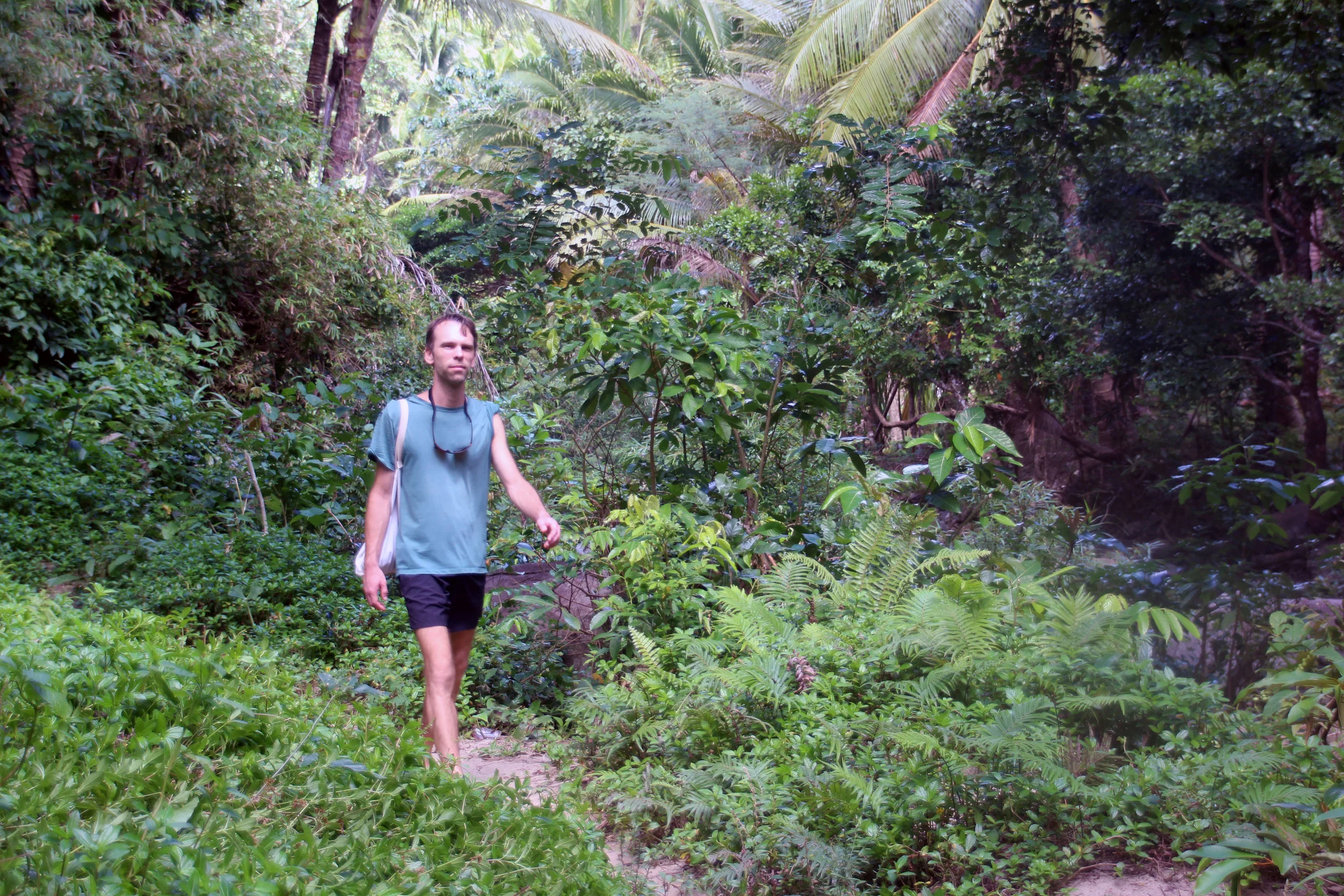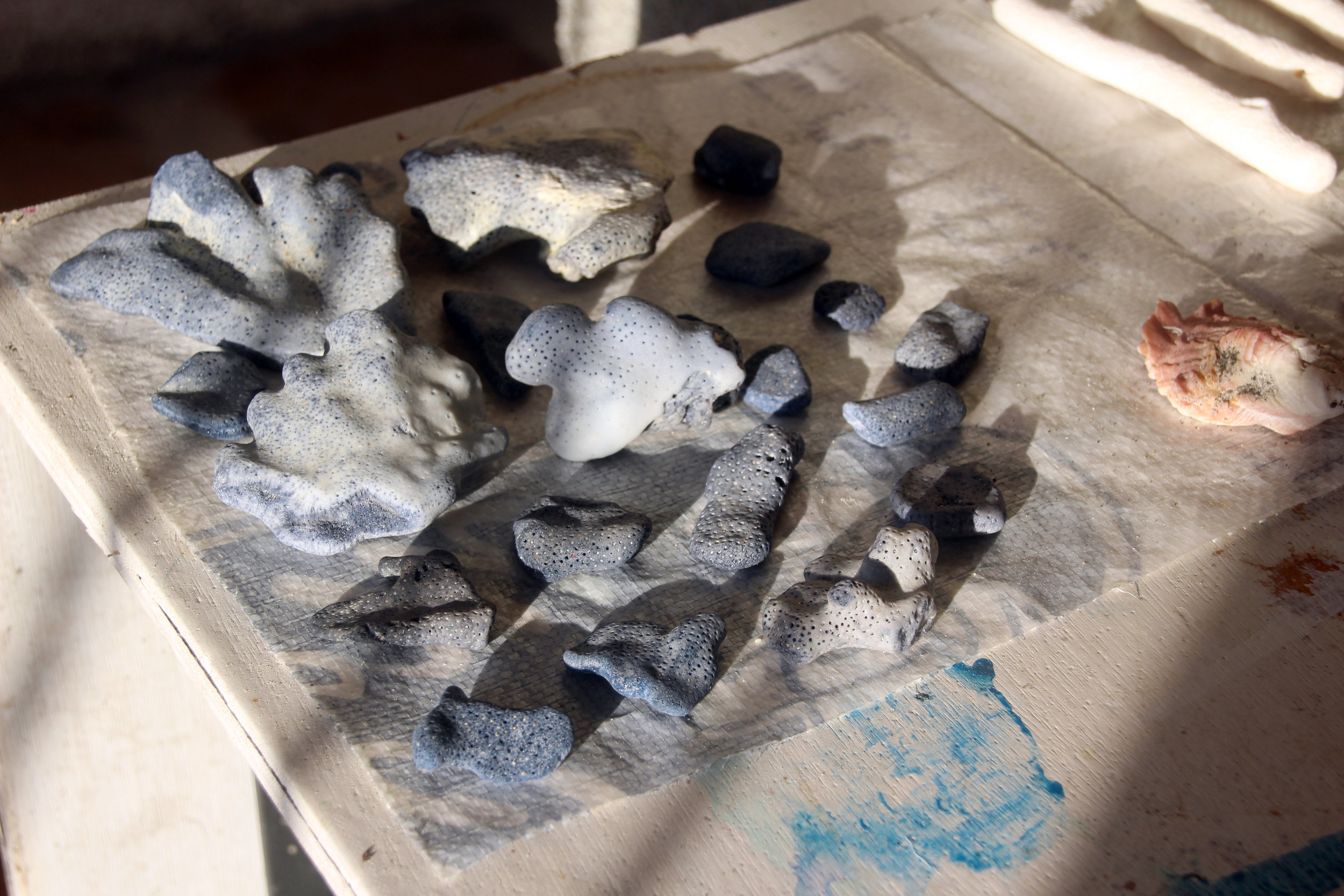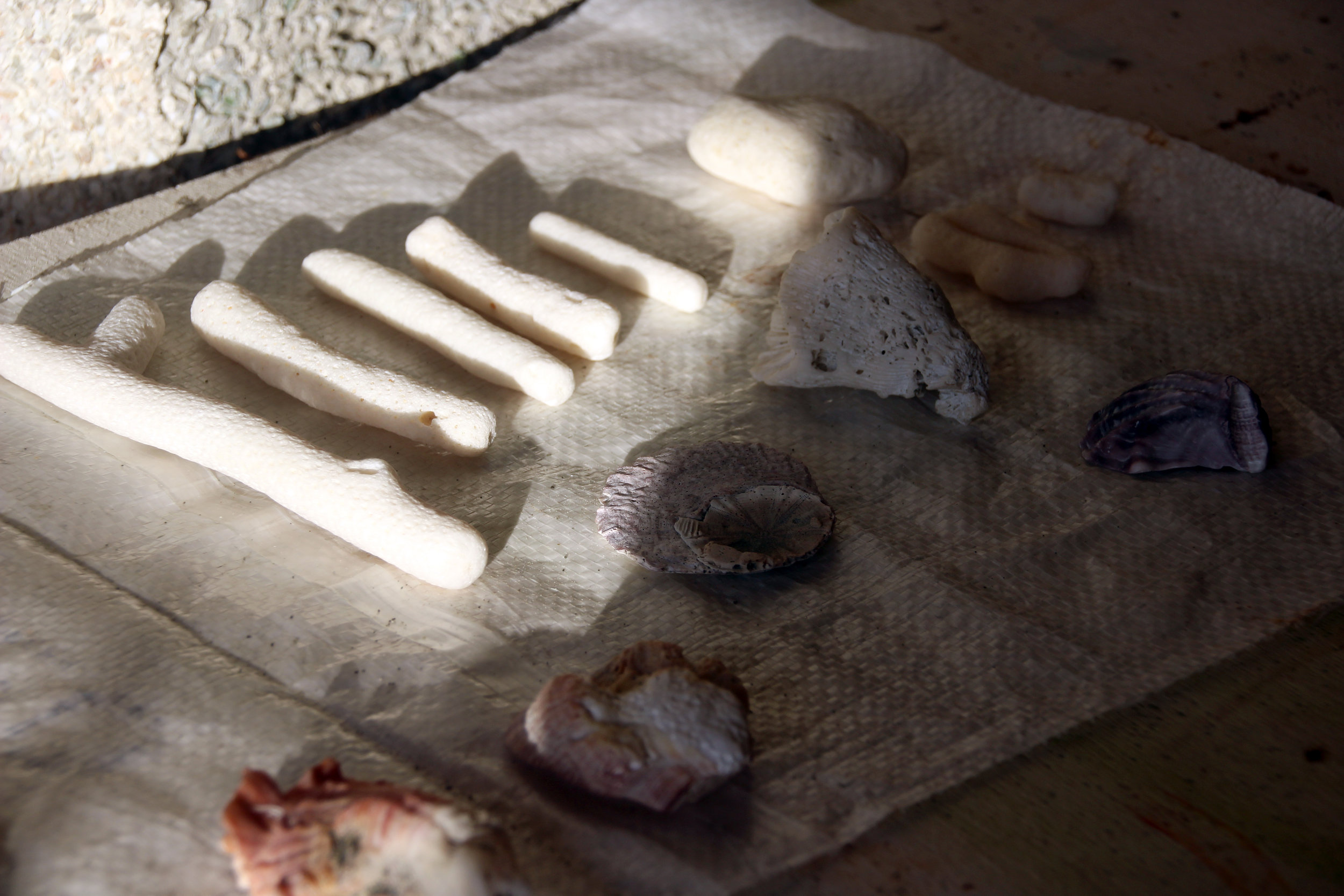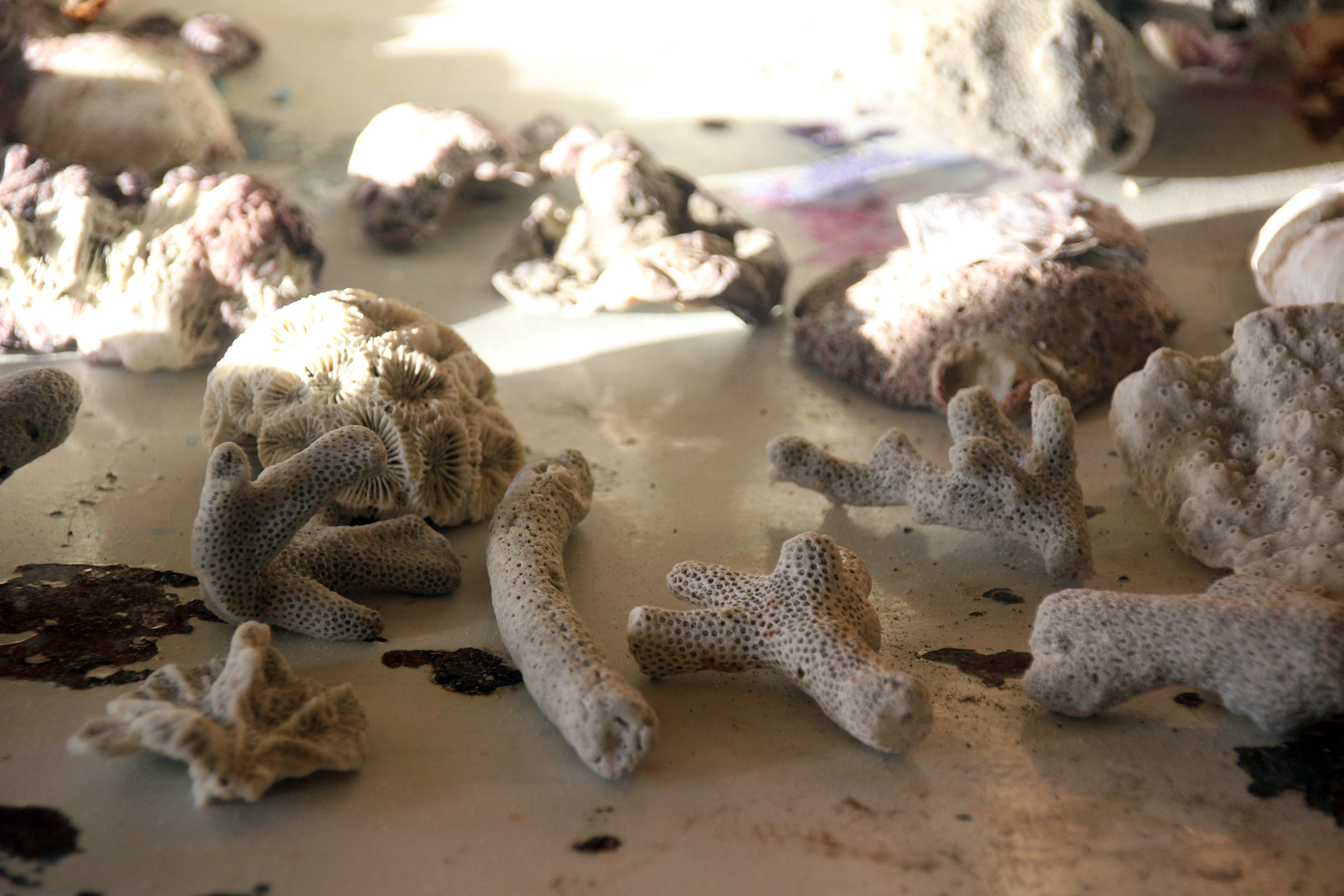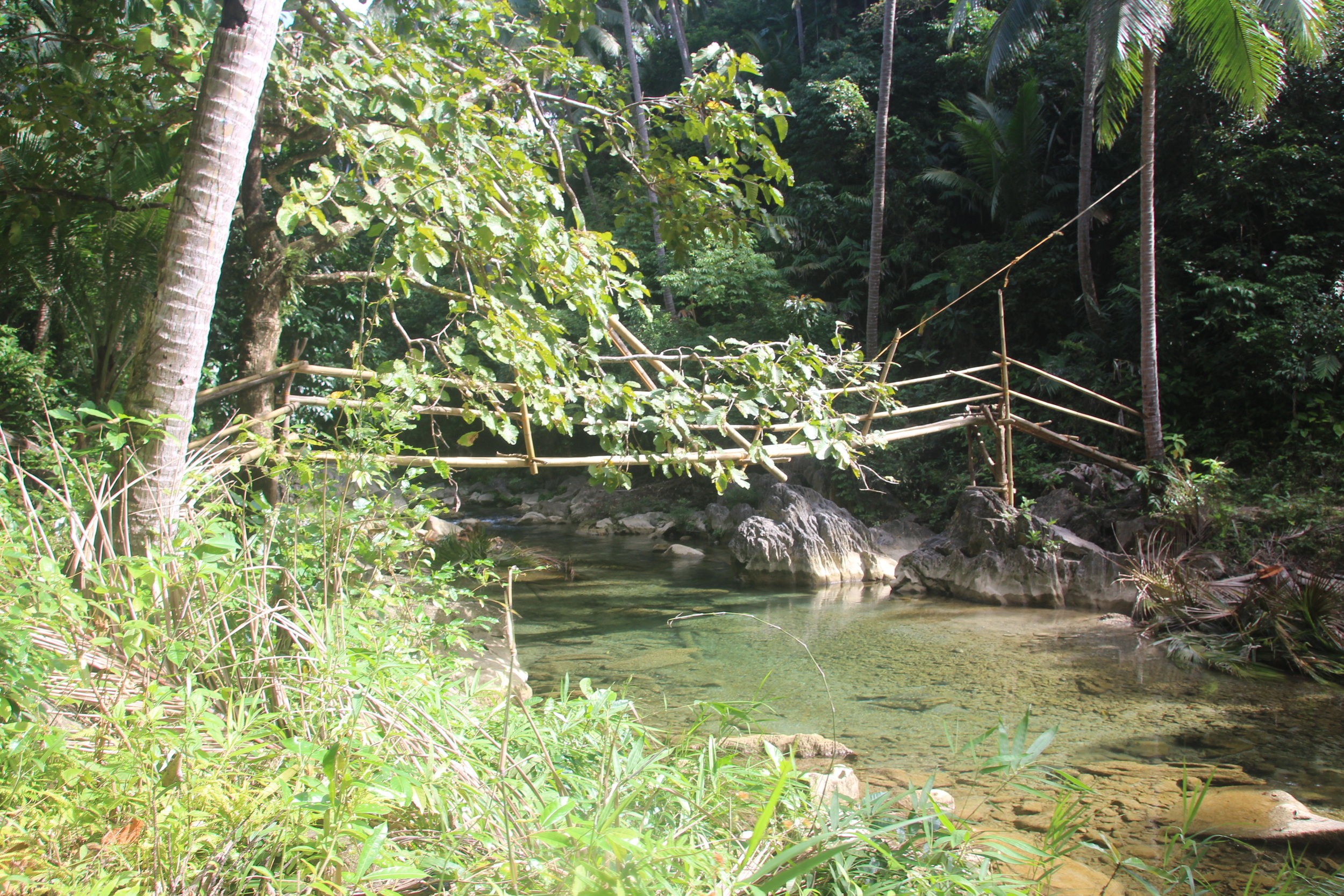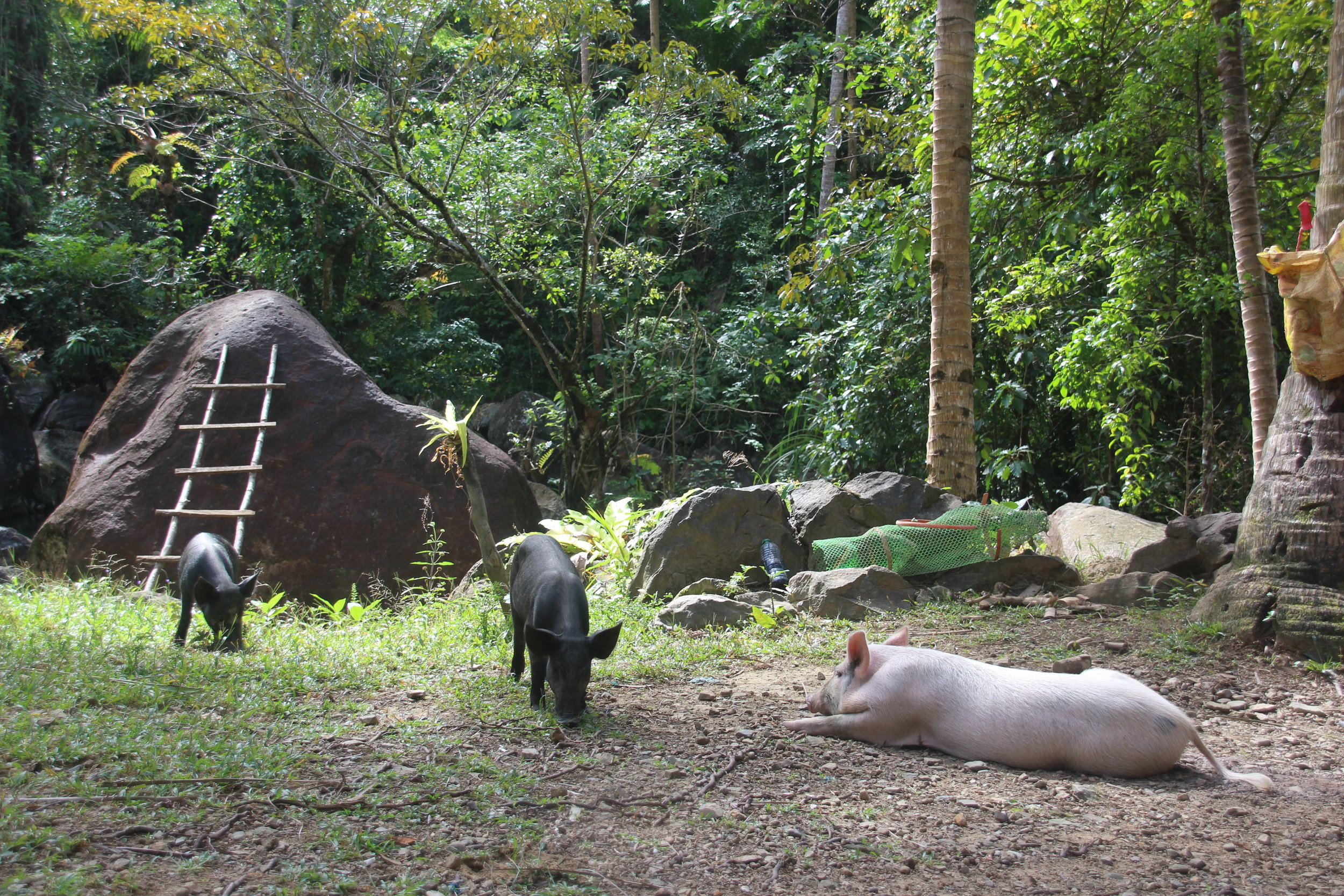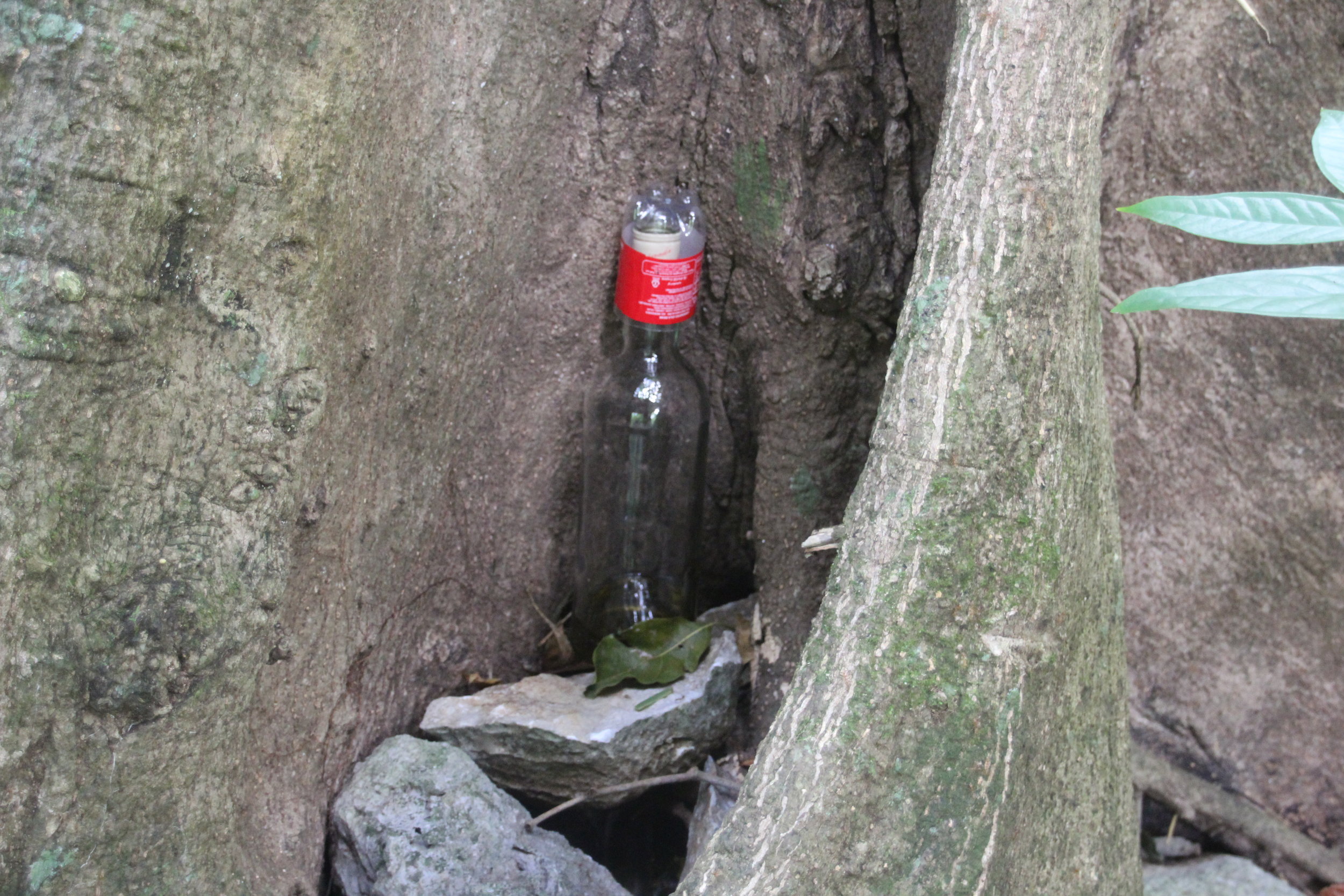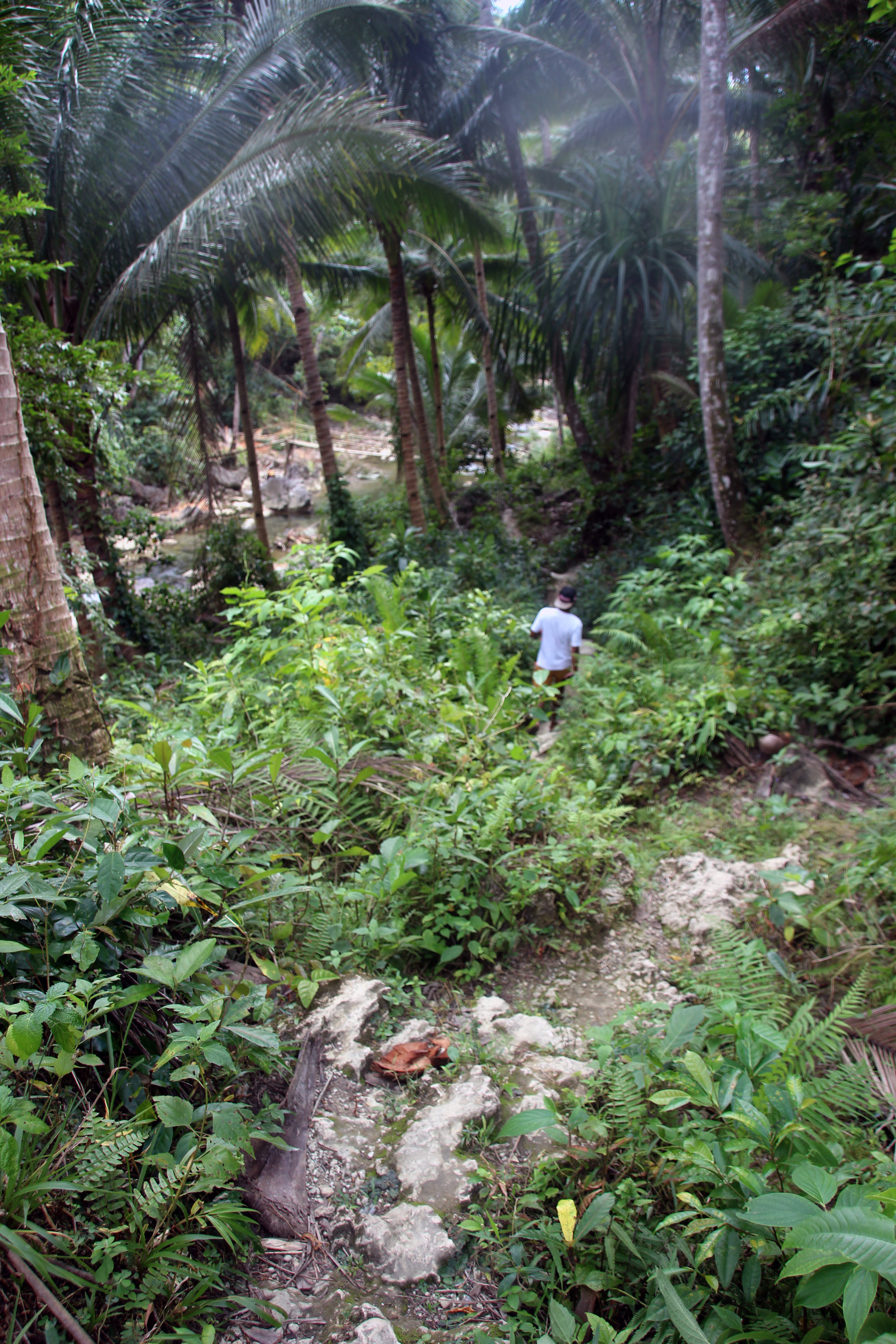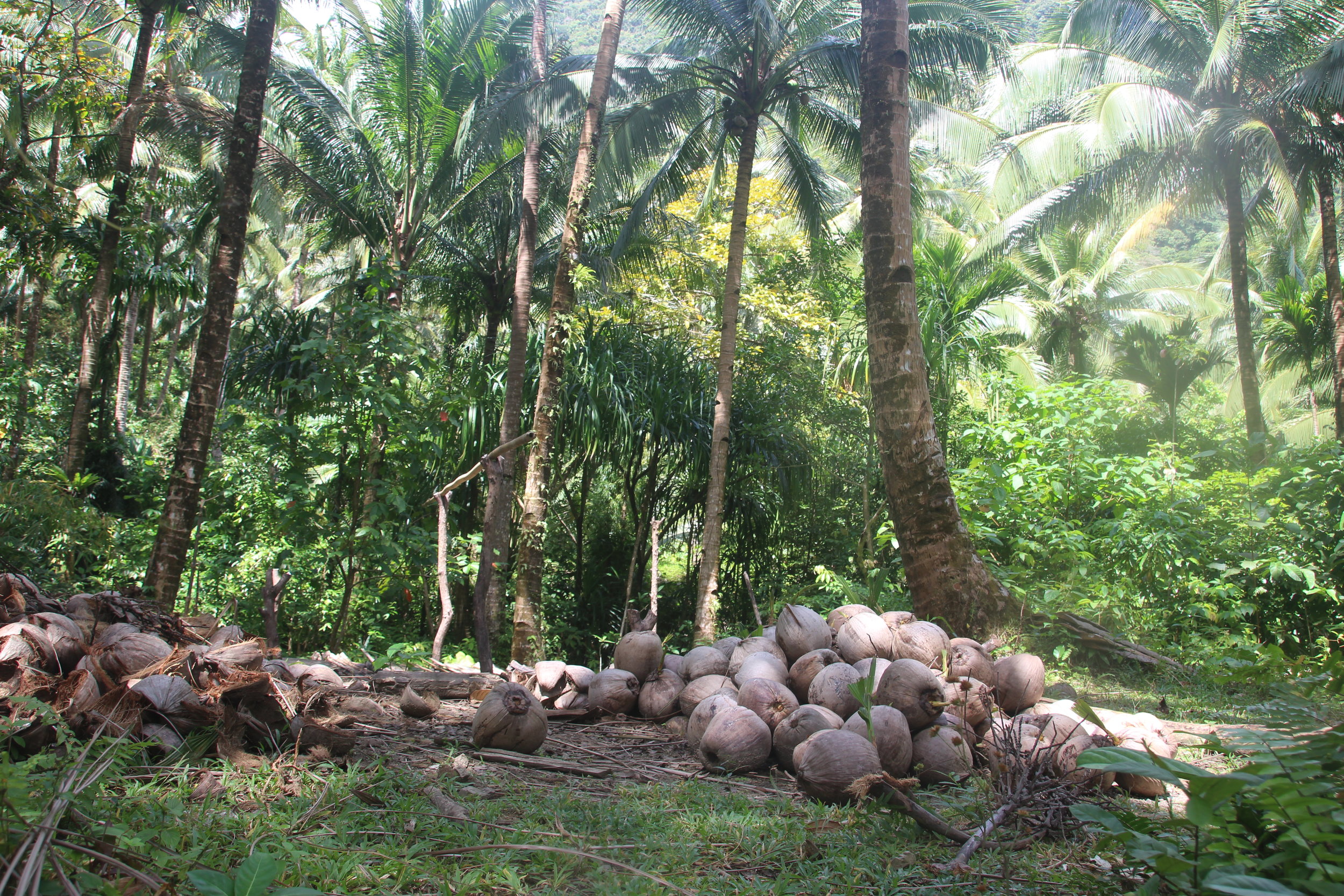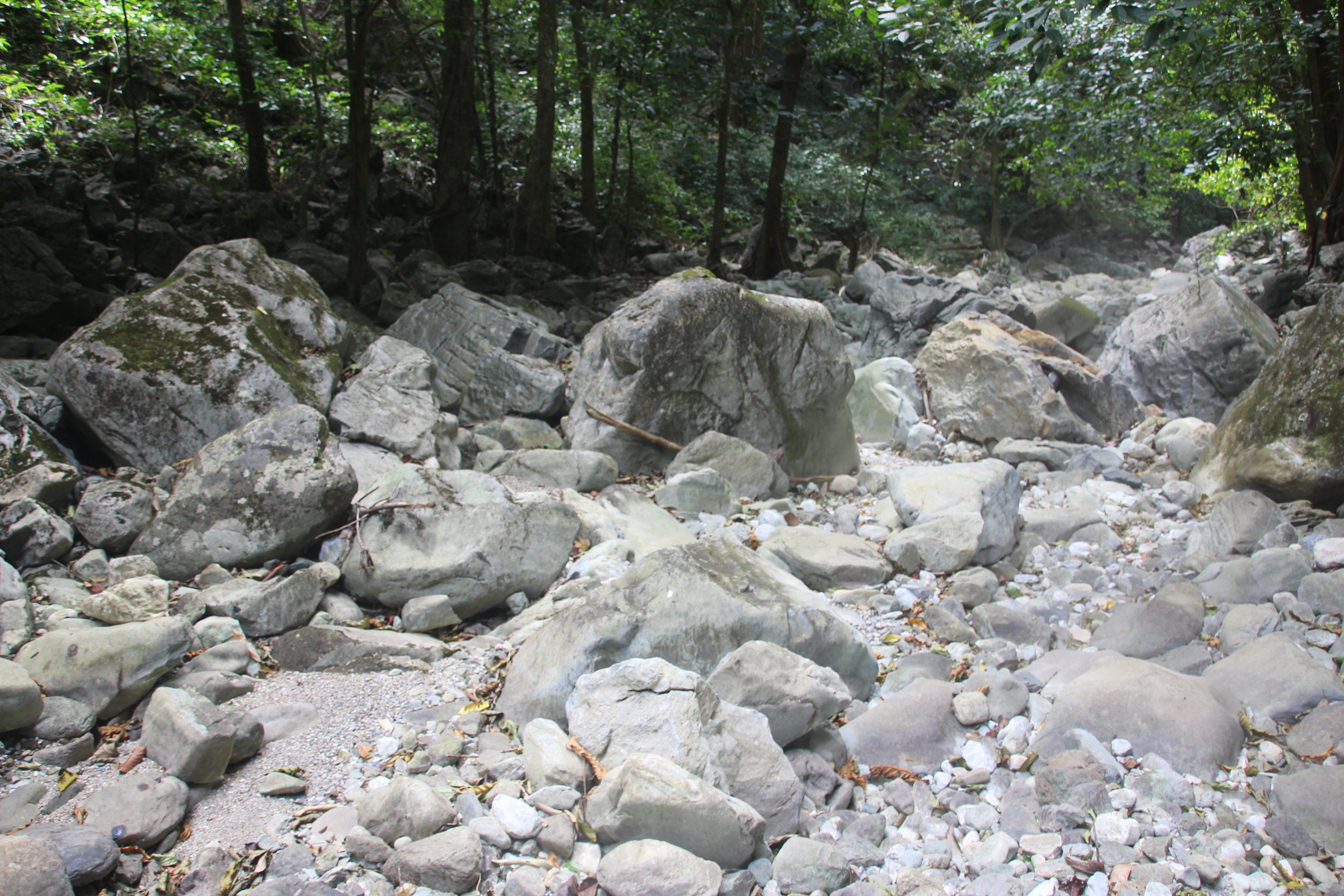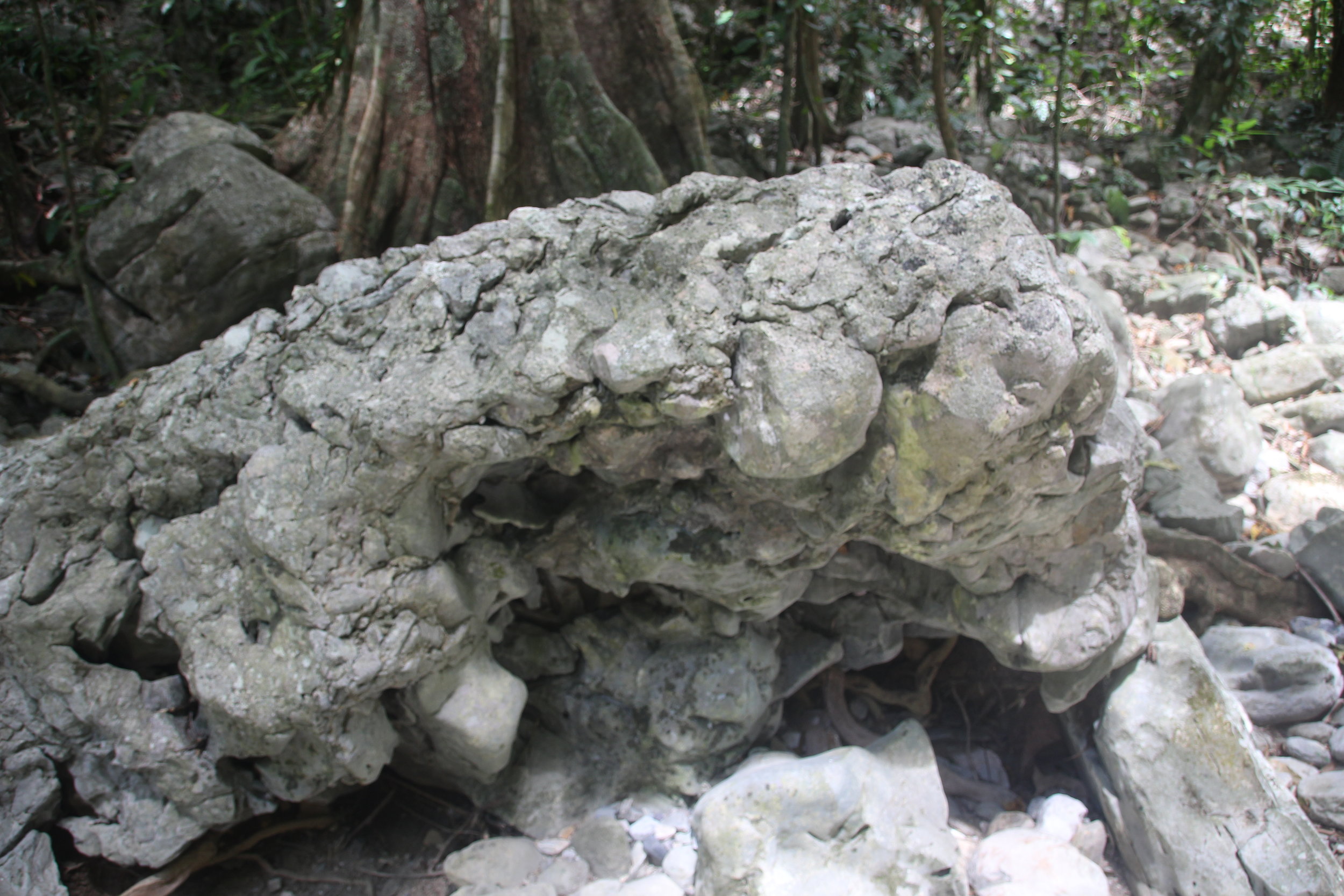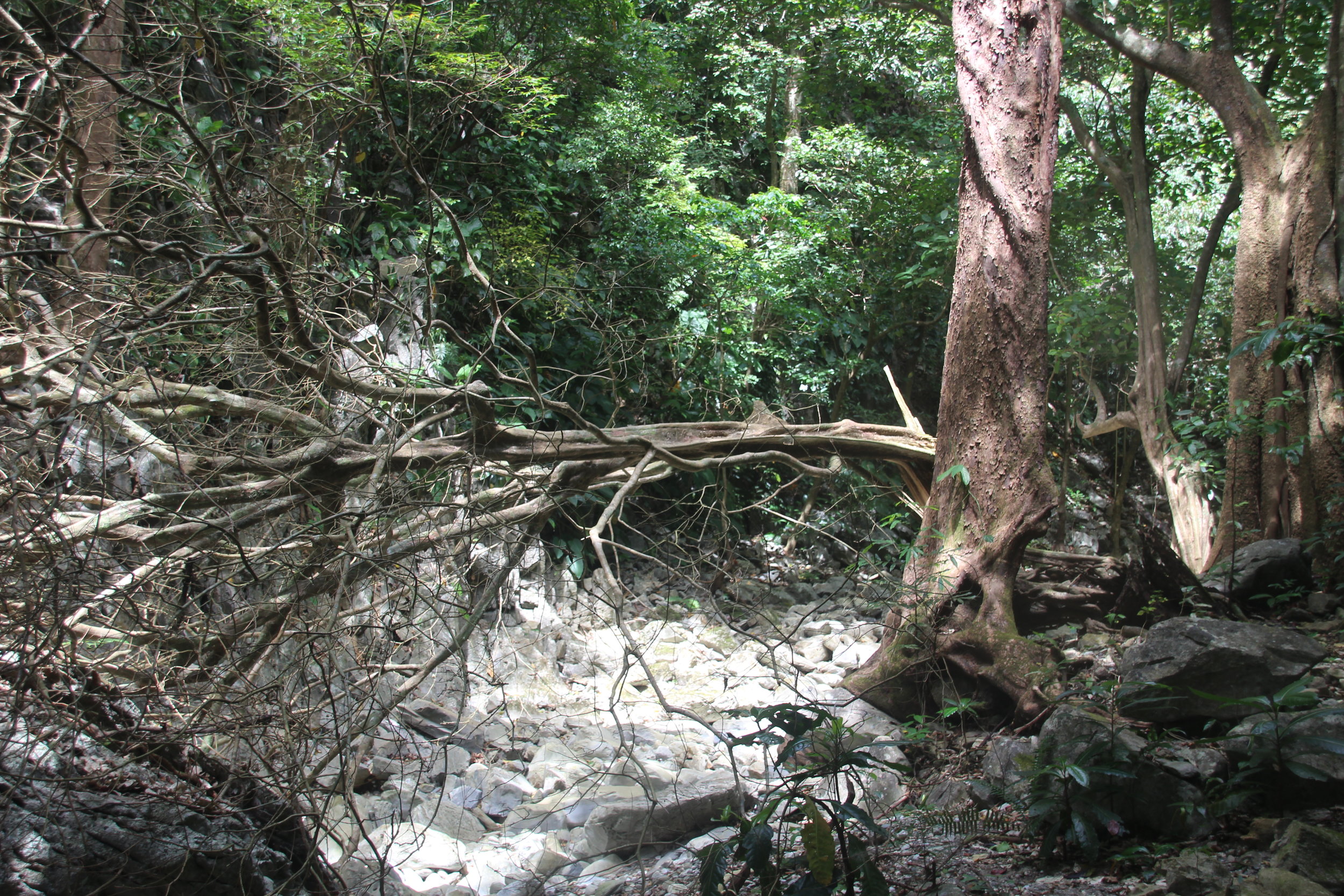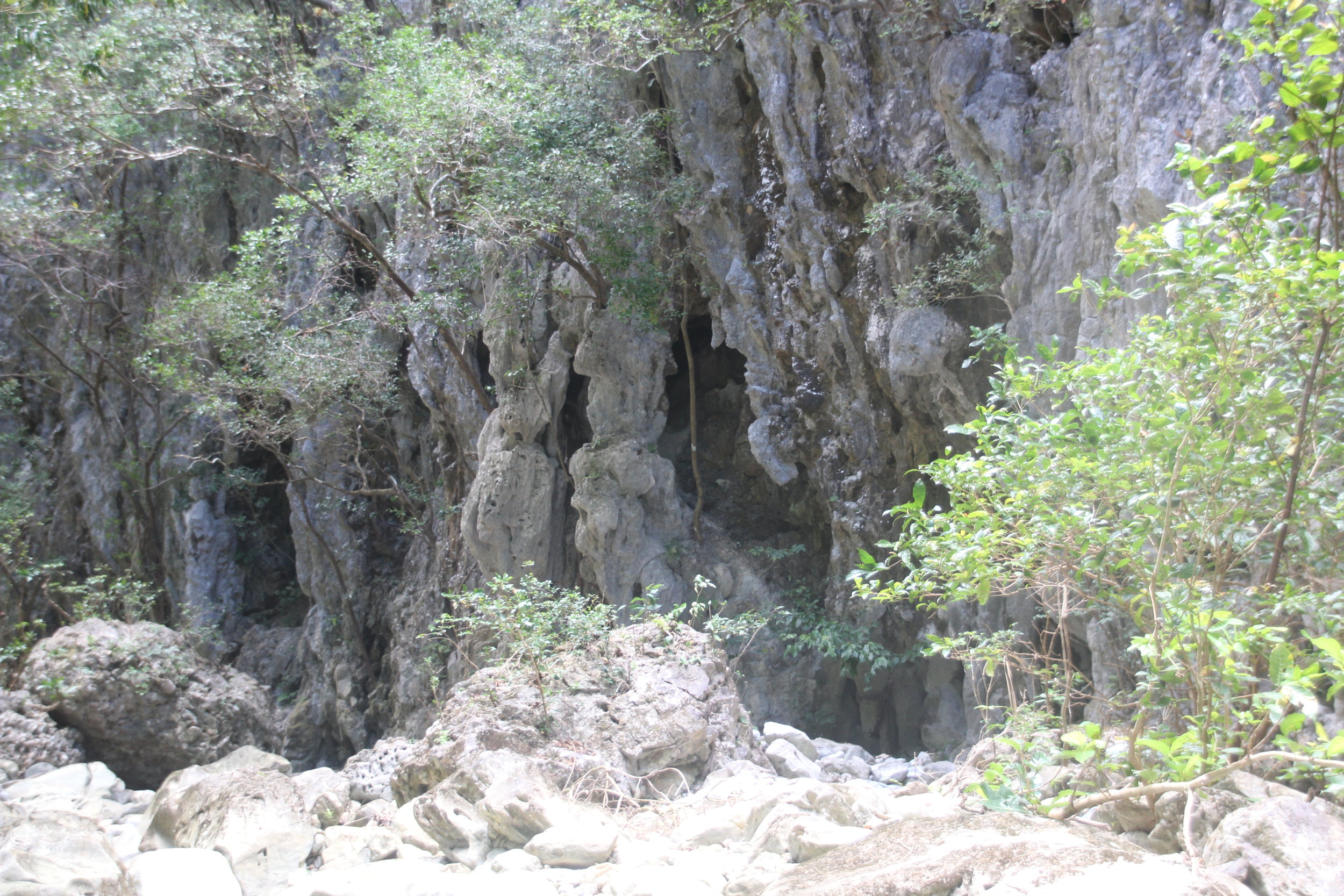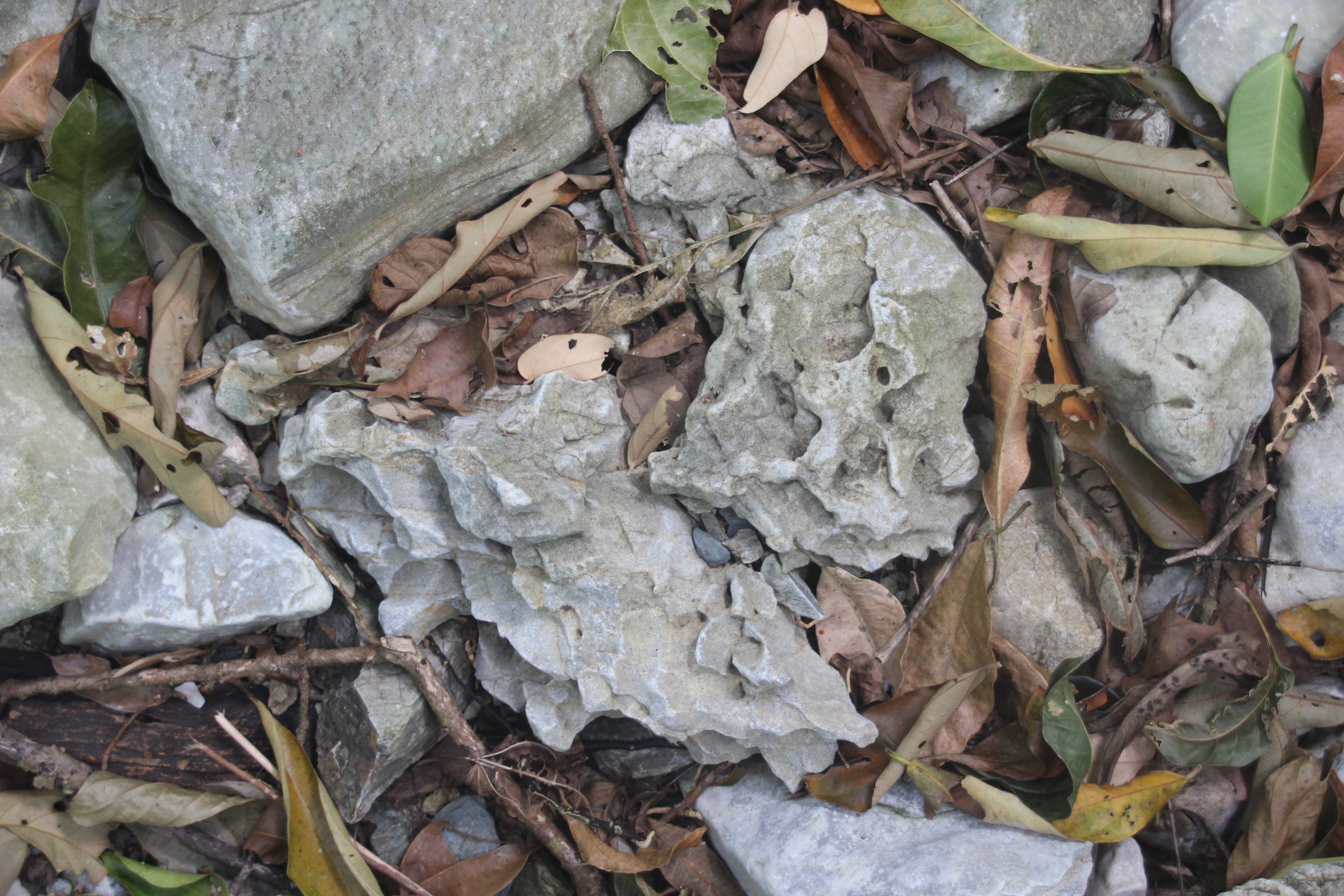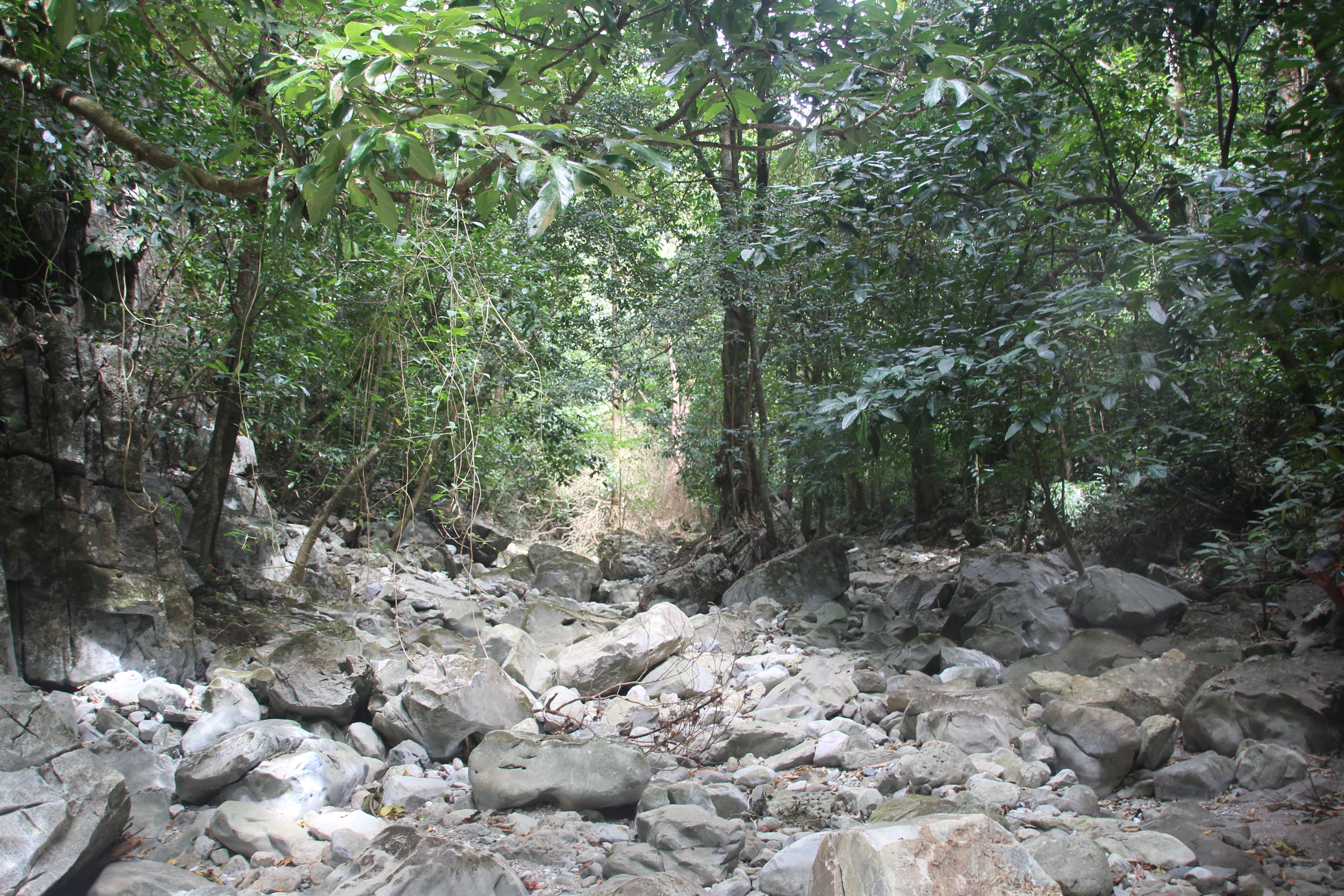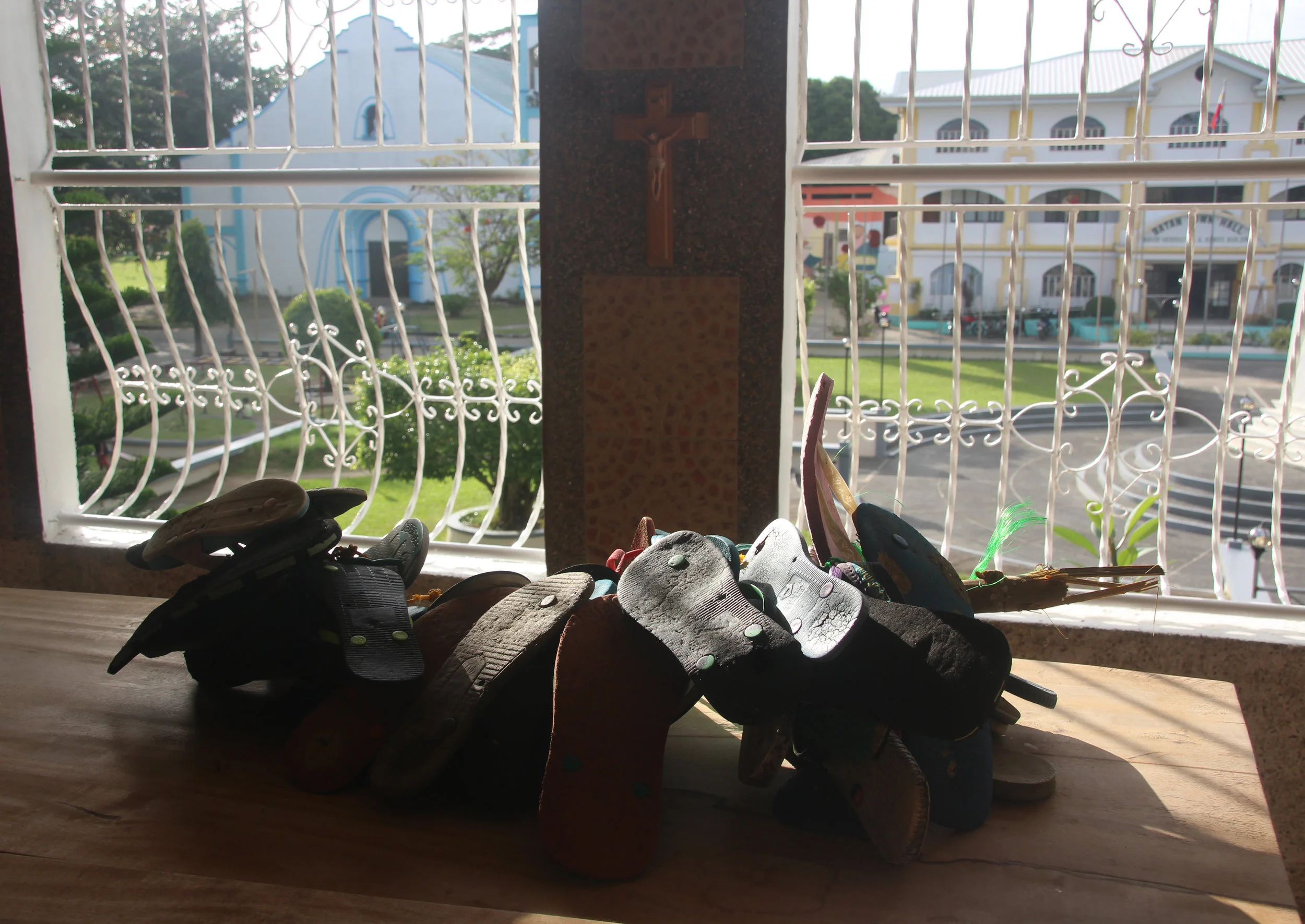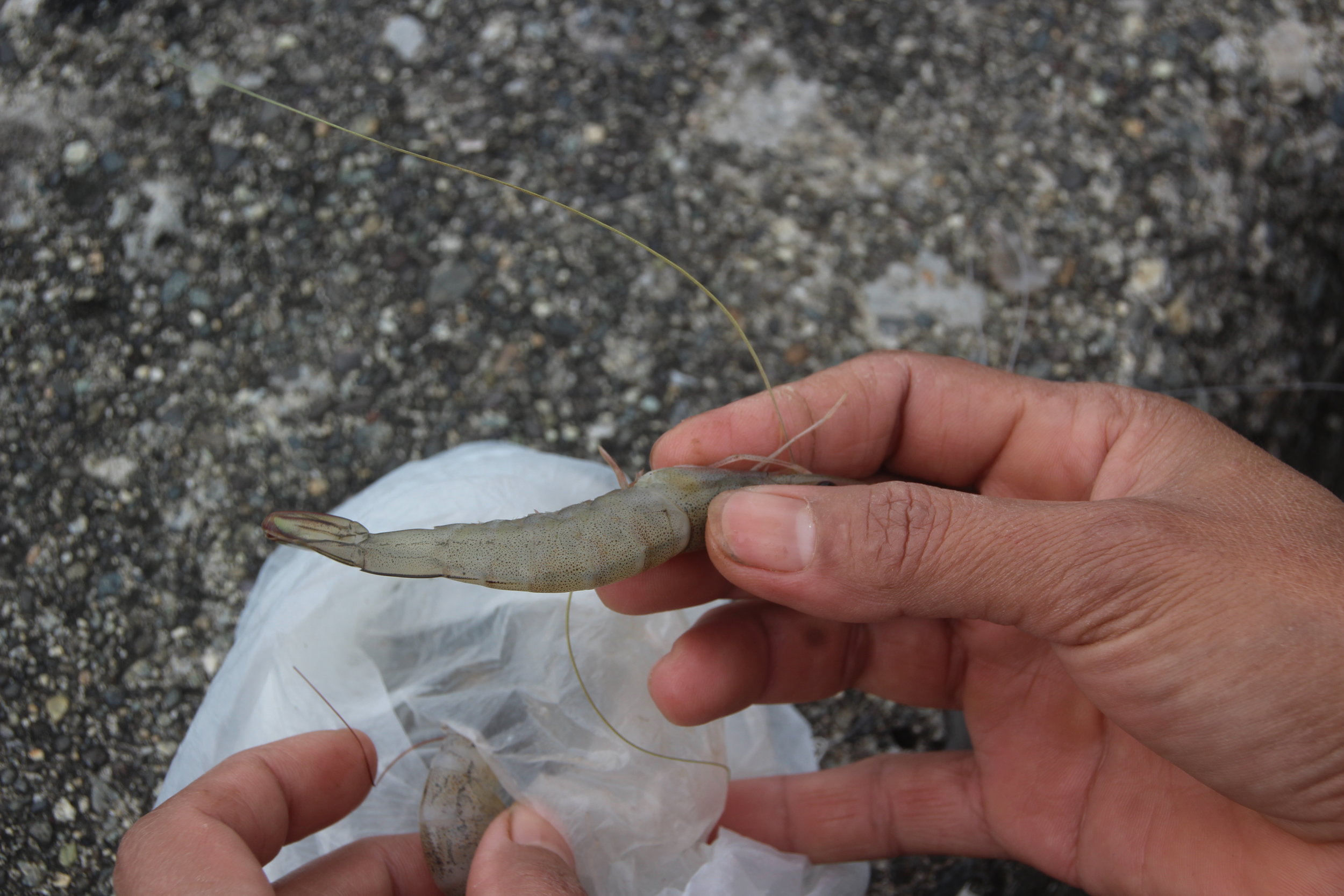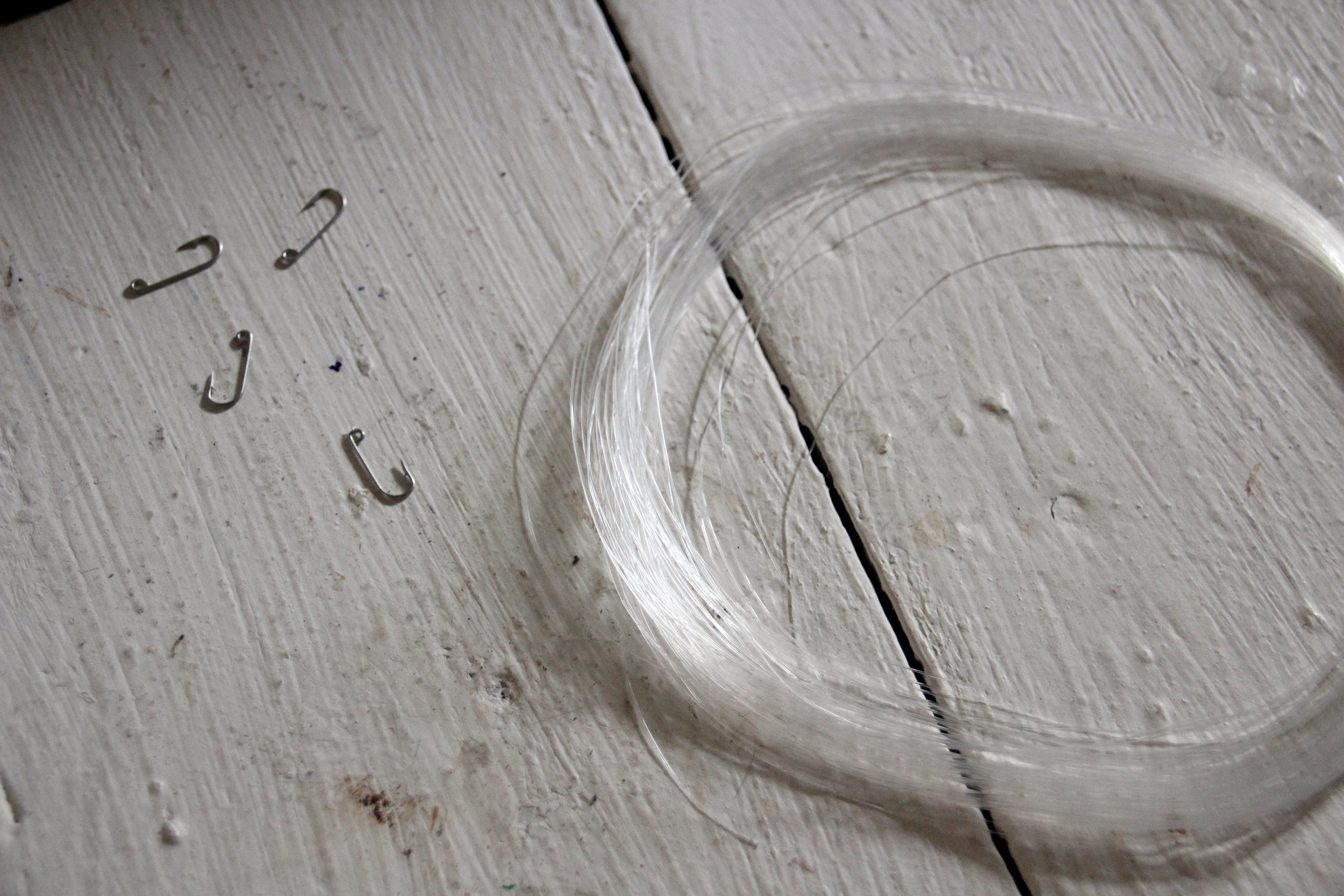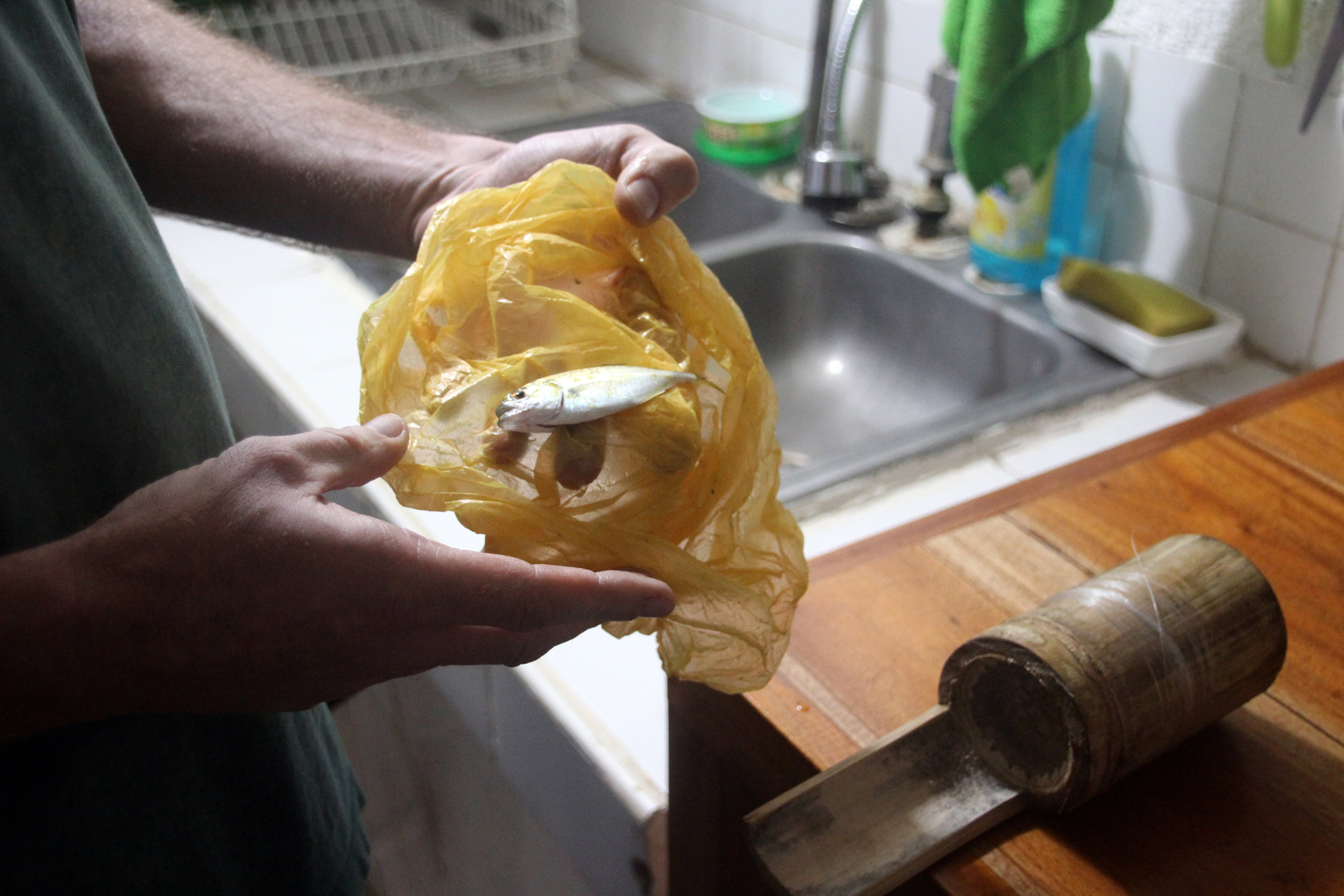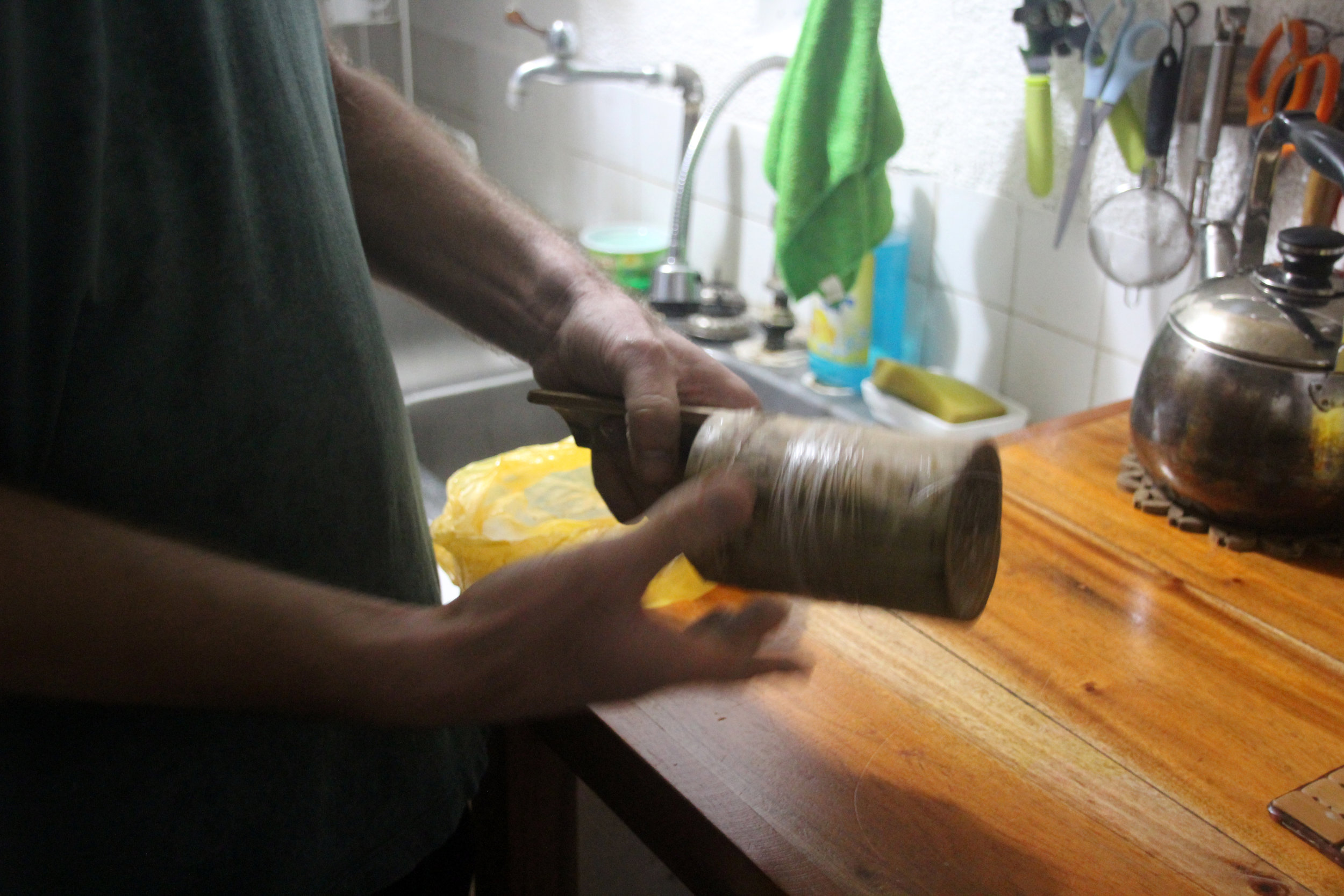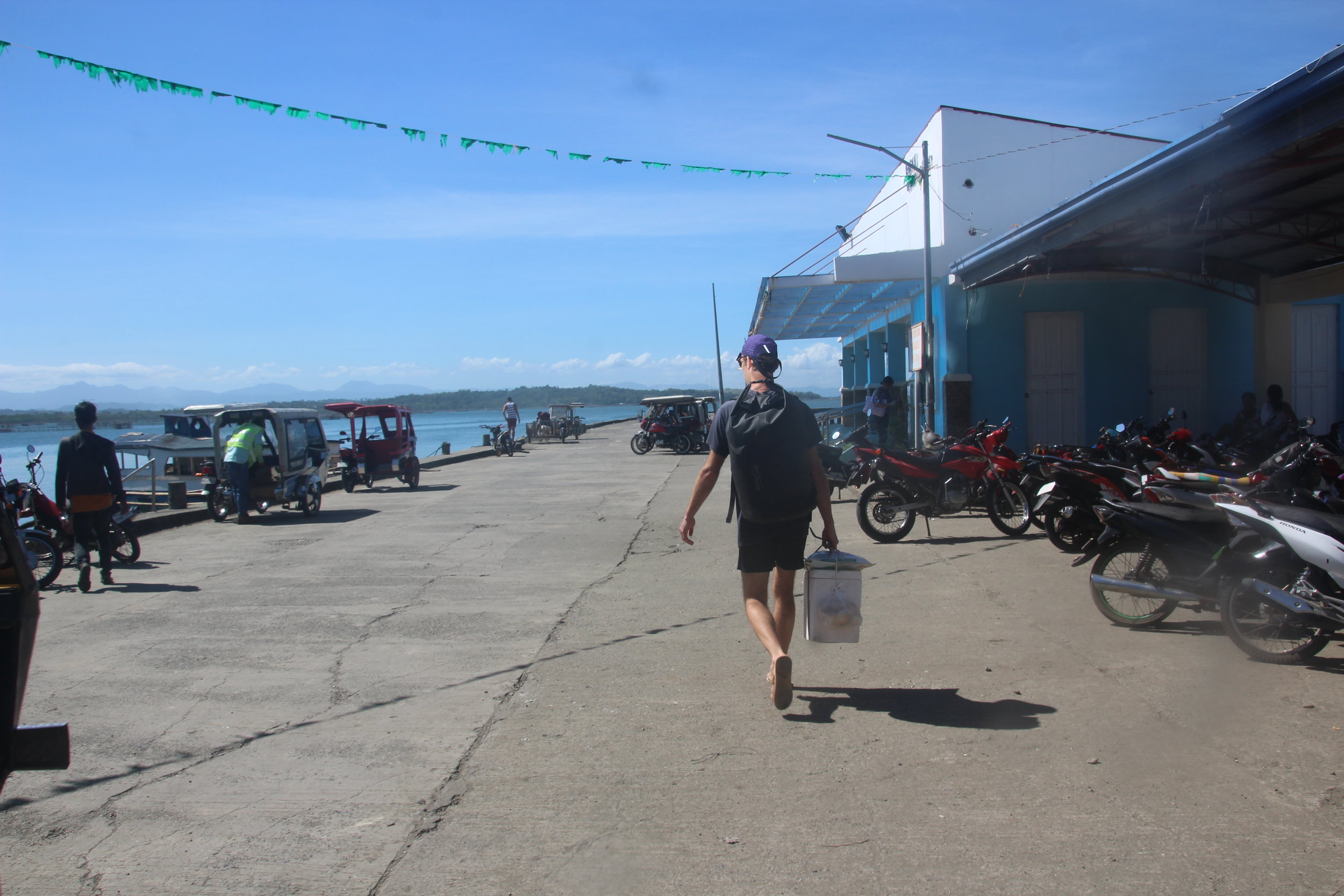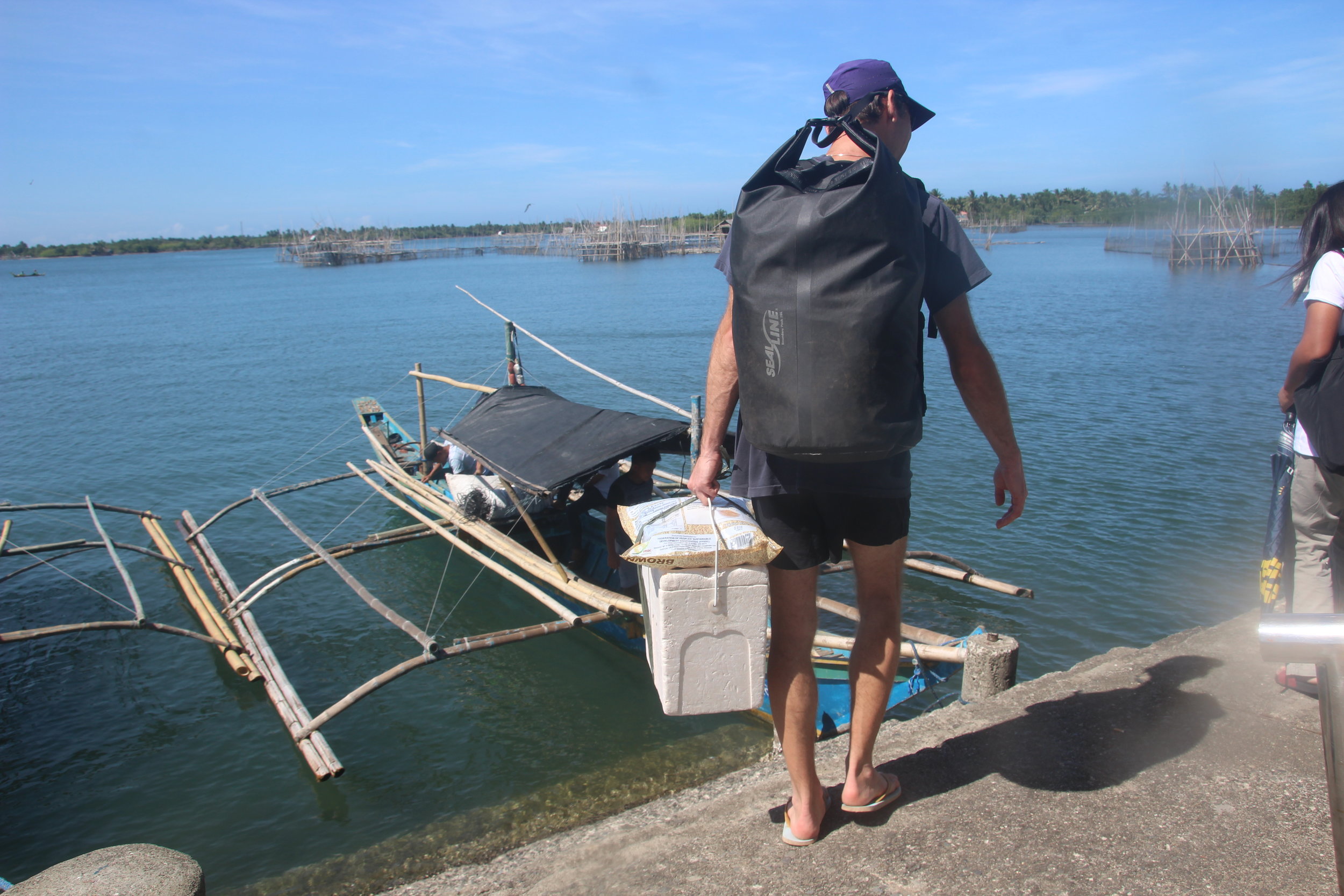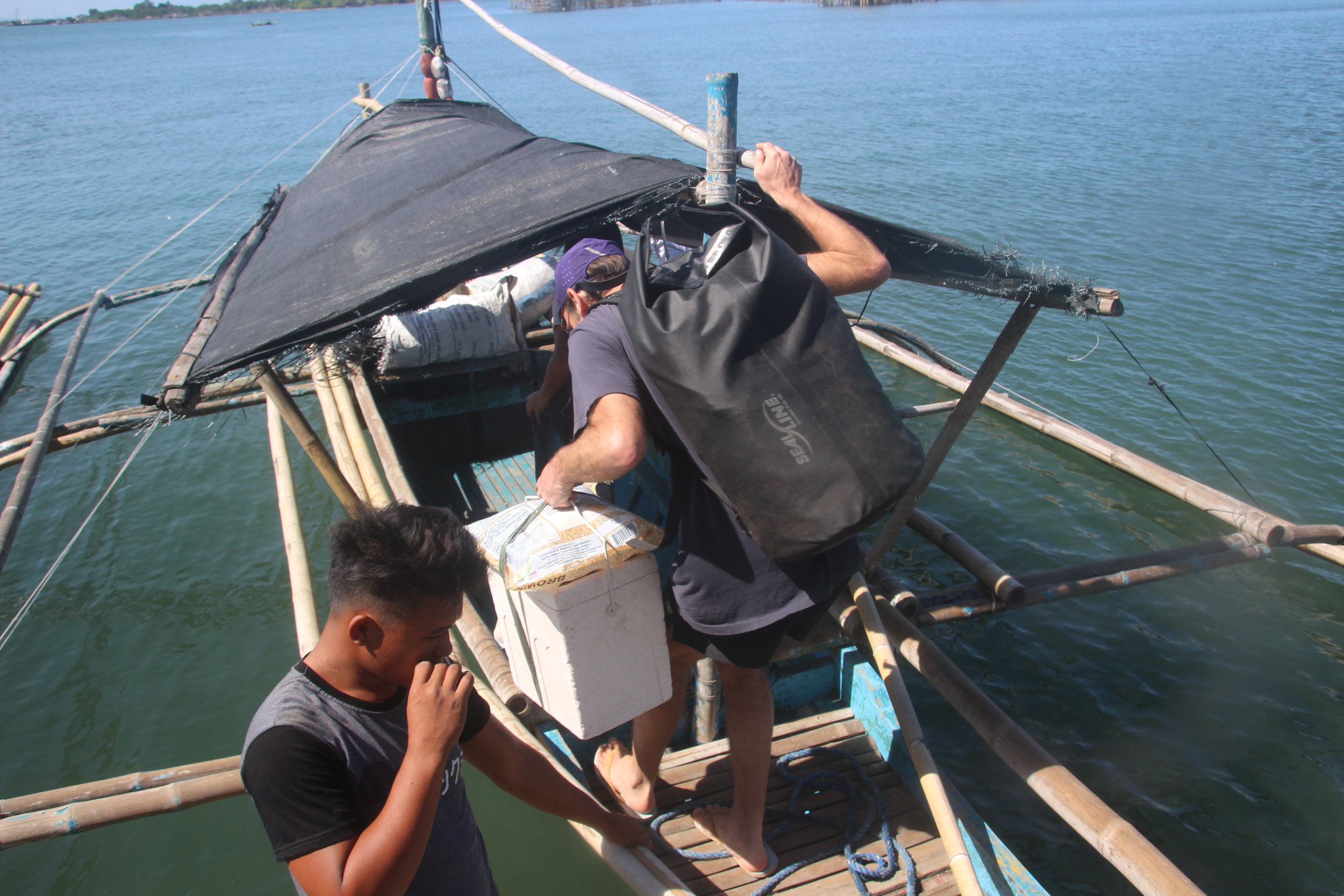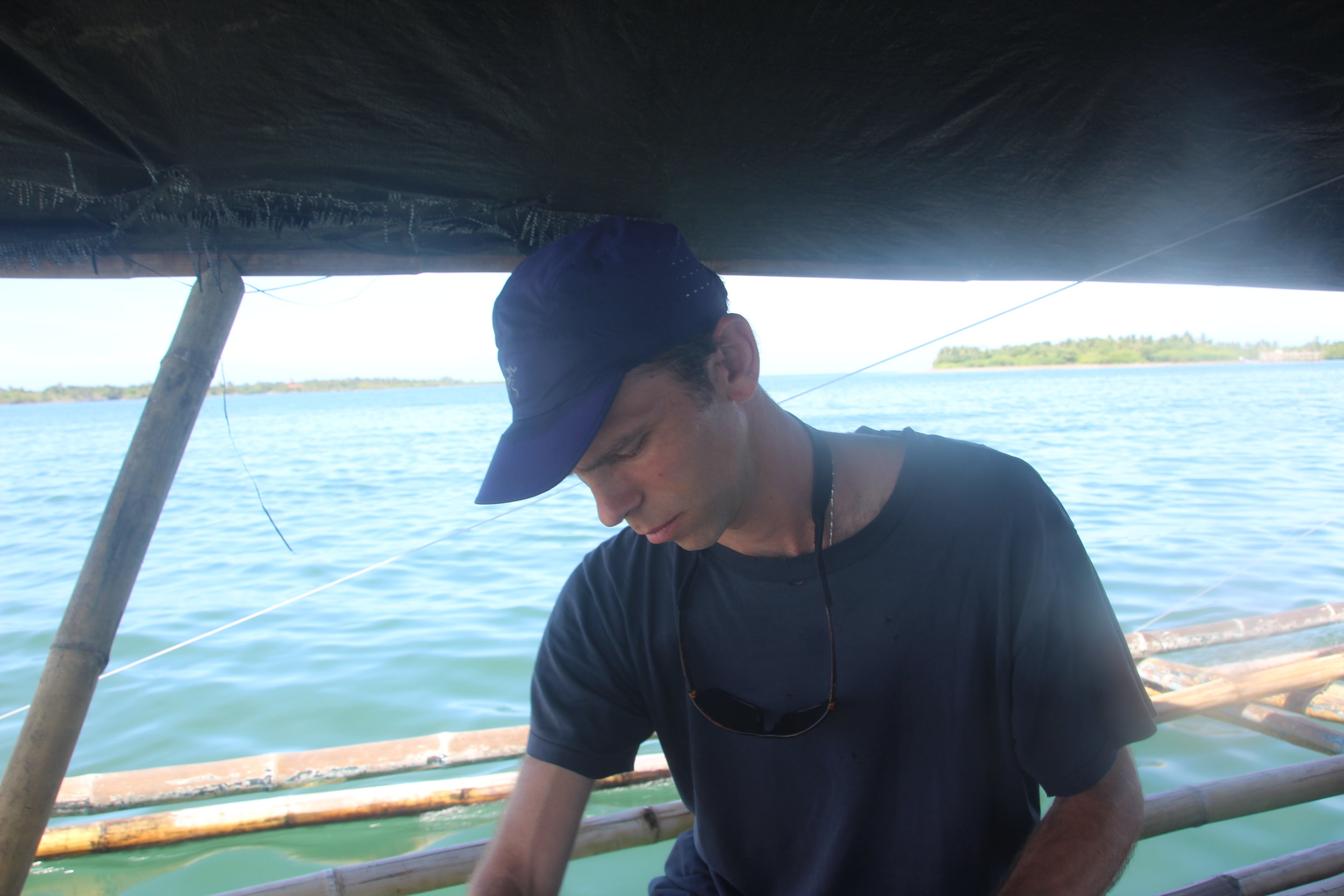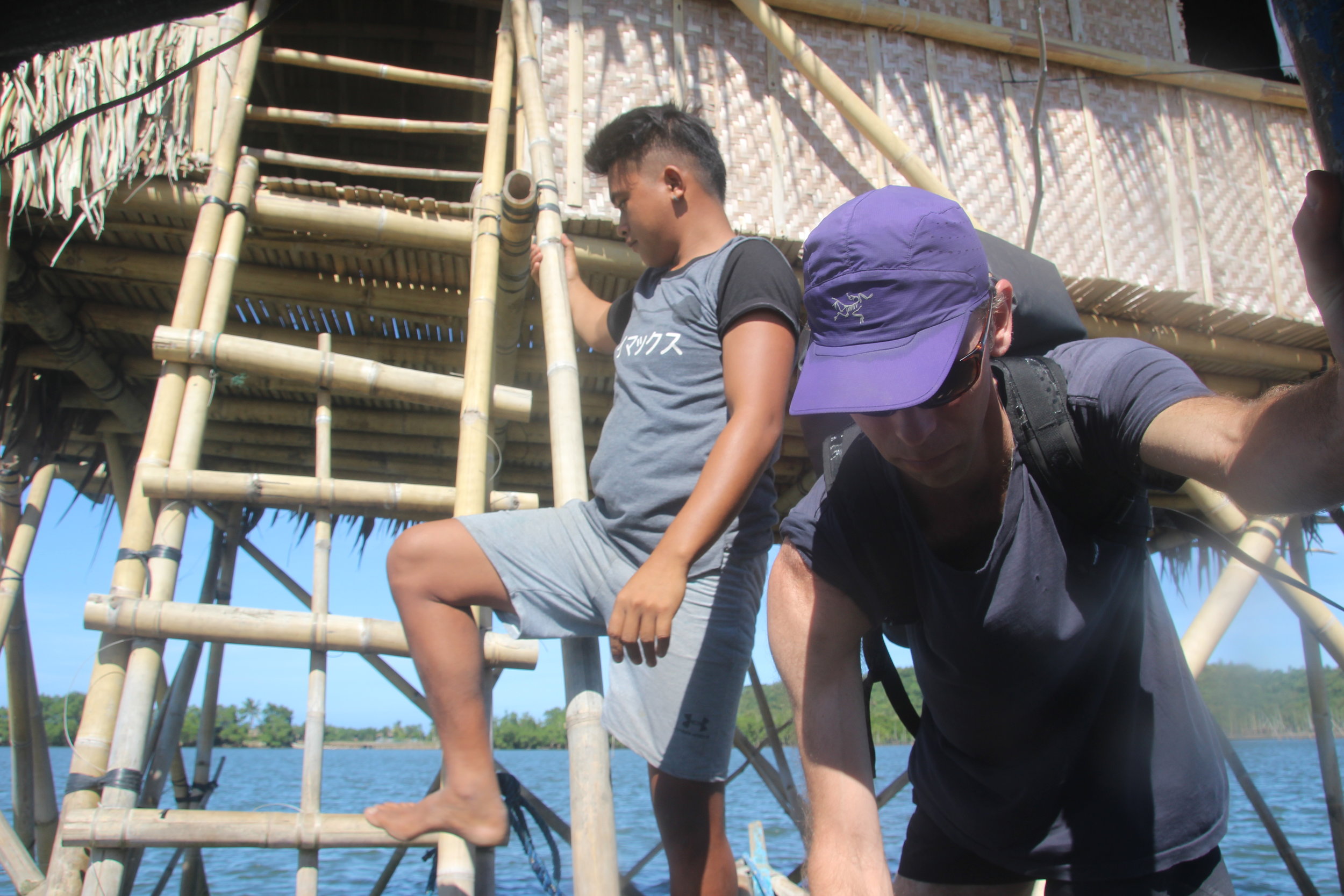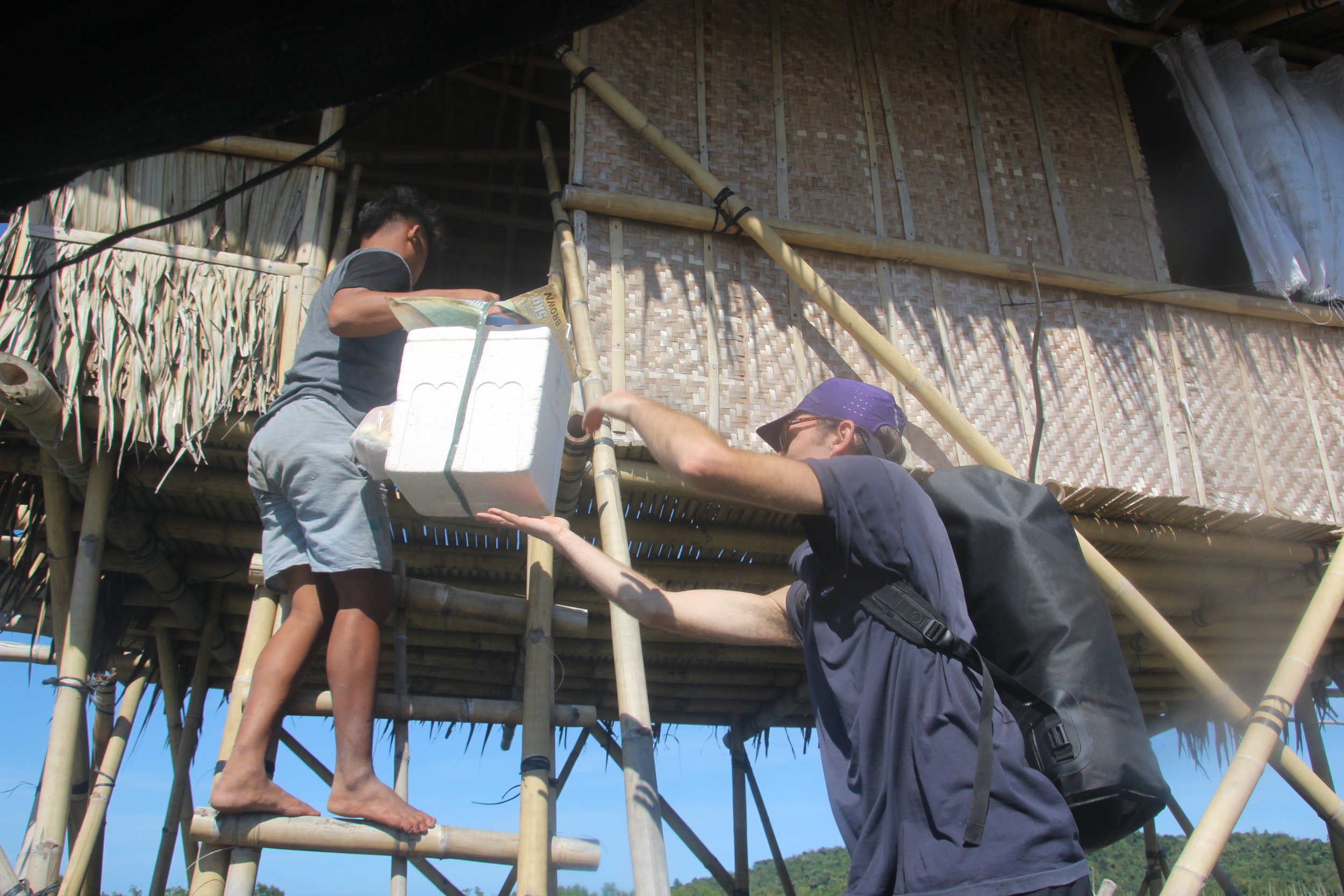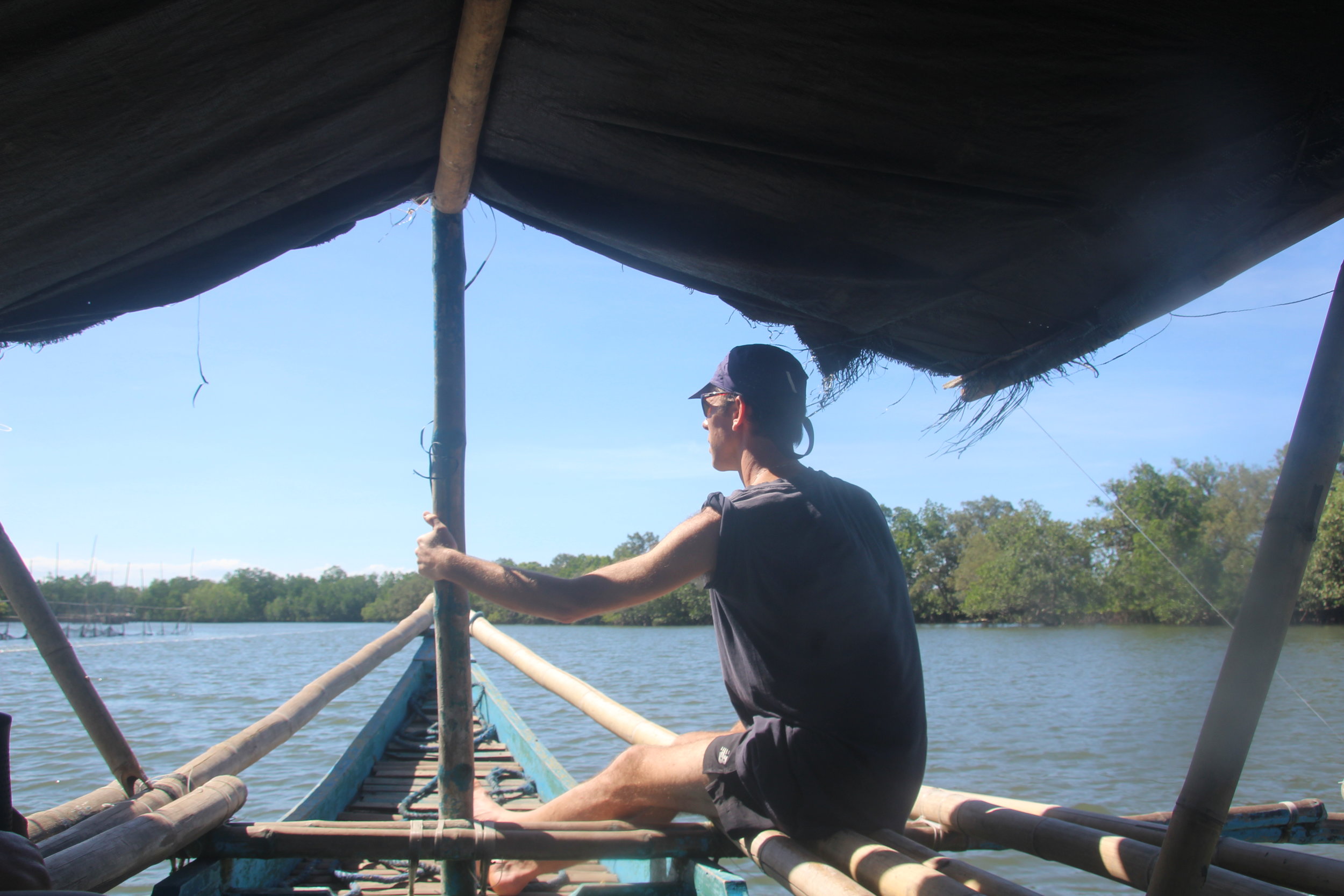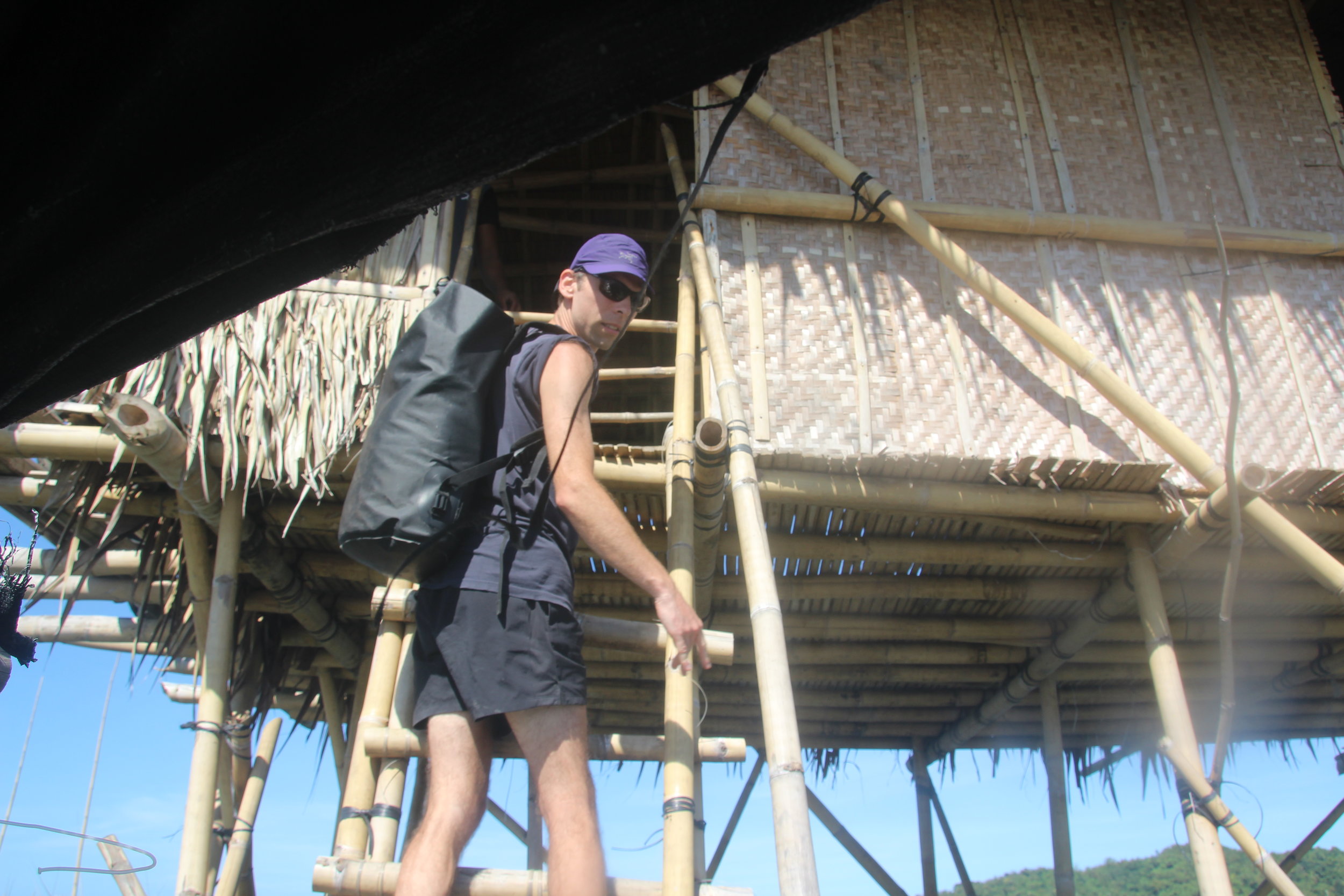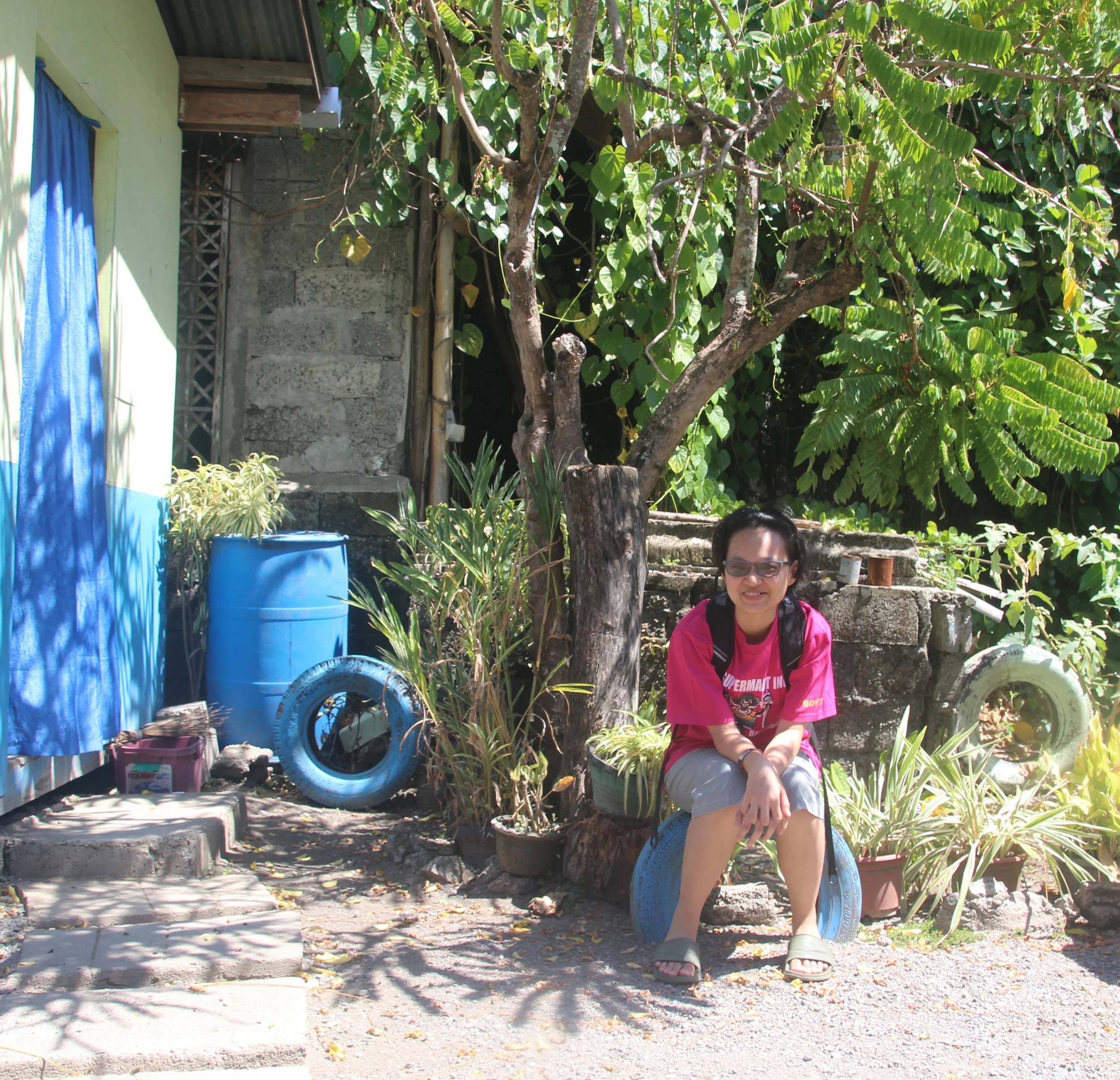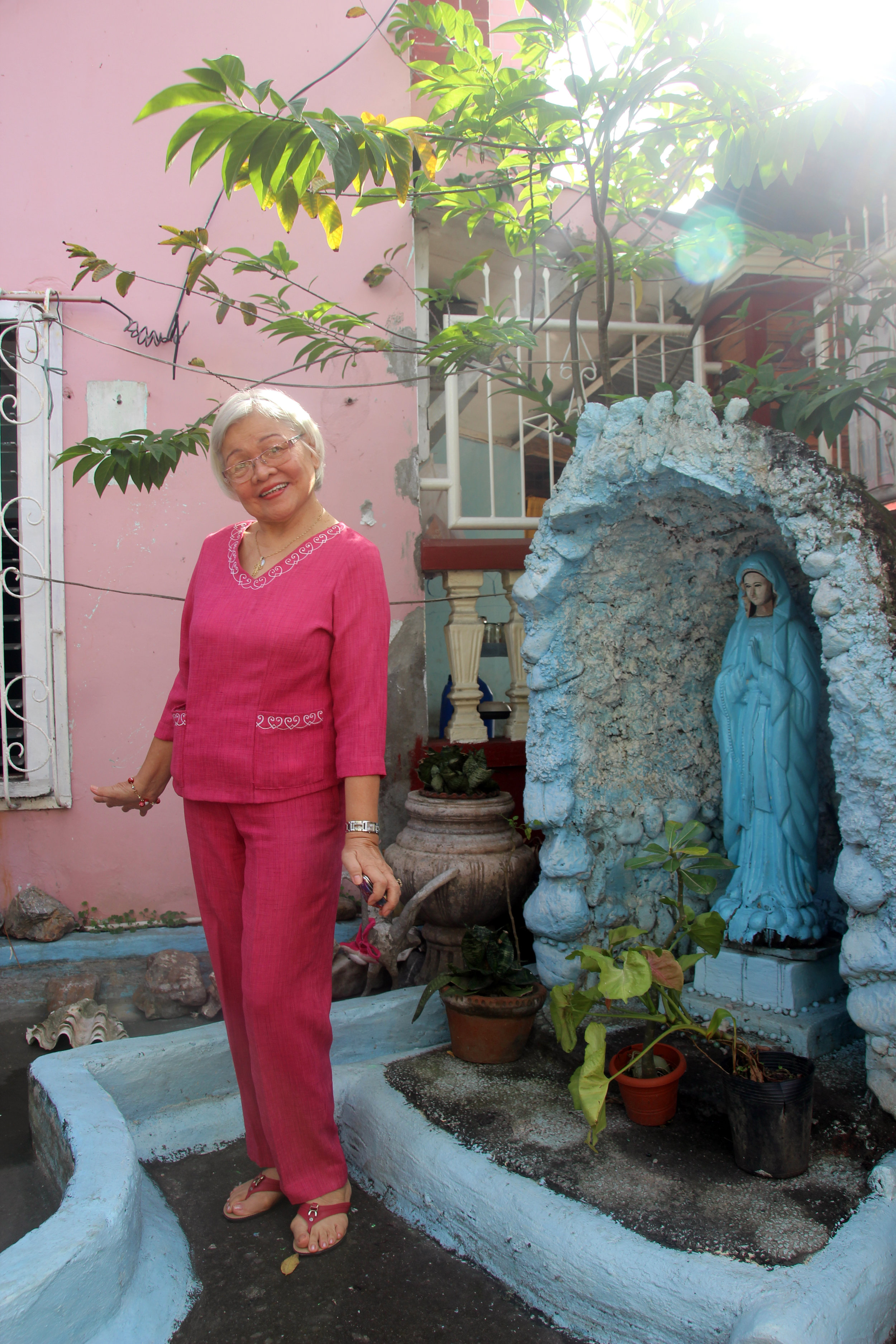On the trail with Michael Drebert
Visual Artist
Vancouver, BC
February 2019
Michael Drebert was scheduled for an August 2018 residency, but due to unforeseeable factors, had deferred twice until his arrival on February 2019. The delay made way for more extensive research about the Philippine culture, history and rich biodiversity. With a particular interest in the aquatic ecosystem, Michael focused his investigation to the Panay Island and more specifically in the Northwest region of Antique and Aklan. By the time of his arrival, he was ready for more material encounters with the subjects of his study.
Guided by his preliminary research, Michael set about on an informed meandering of Batan and the surrounding area.
NW Panay Peninsula National Park (NWPPNP) is a sprawling 12,000 hectares of protected forest area, with part of the land in Antique and the rest in Aklan. This highly significant land mass is home to countless endangered species, endemic trees and plants, and water channels that supply over 100,000 people with fresh rainwater. Entry into NWPPNP is difficult, and without proper consent from officials, is impossible. But with such resource just hours away from Elmo's House, it was necessary to at least try.
What was granted in the end, was a hike through the buffer zone that forms a forest boundary around the park. Guided by forest technician Mr. Venancio L. Lebuna and SEAMS (socio-economic assessment and monitoring systems) enumerator Angel B. Biadora, Michael explored the lush woods, fresh watersheds and marble-footed cliffs, which was more than initially anticipated.
This particular visit ignited a desire for more intimate encounters with nature, simple gestures and interactions that are not only in line with Michael's art practice but his philosophies as well. Throughout his residency, Michael took part in many daily activities - planted trees at Rainforest Botanical Garden in Banika (Ambolong), visited the protected corals at Mambuquaio, assisted in the communal pulling of fishing nets on the shore, fished at the pantalan (ferry port) with his DIY bamboo pole, travelled to the Ati Komunidad in Boracay to understand the other side of tourism and spent the evening in a bintahan (stationary bamboo and net structure) with Randy, a night-time fisherman in Tinagong Dagat (Hidden Sea). With these empirical modes of learning, Michael took slow and careful strides to understand the intimate exchange between man and nature, informed by geography and culture.
“What am I doing?”. Well, I’m likely following the lead of the plants, and my little bit of geography, or land — one thing leading to the next.
Above the significant and varied engagements with the surrounding nature, it was the daily walks that grounded Michael Drebert's residency. On his first morning at Elmo's House, following cardinal directions and landmarks, he found his way to Songcolan beach. With his propensity for repeated gestures, this particular route developed into a daily ritual usually performed before the height of the afternoon sun.
I don’t know of a better way to follow the trail of something, than to get outside, and to start walking around.
It takes about 20 -30 minutes to walk from the residency to the beach, passing two barangays and going over a couple of bridges.
From Elmo's House, turn right, then turn right again onto Magsugod Street. The street ends on a perpendicular road; continue left crossing a small bridge entering the community of Batwan. The trail continues for some time more. There will be an old Spanish cemetery on the right and a cock-fighting ring on the left. Turn left onto a dirt path and cross the narrow half-moon bridge over Magsugod River. The route continues past a waiting shed and onto a weir separating two fish ponds. The dirt road curves right and becomes paved, past rice fields and a blue and white elementary school on the right. The road curves again; left past the barangay hall and covered basketball court. Before the cement road transitions back to earth, wafts of fried things for sale will fill the air until a gust from the sea takes it away. From between the houses and trees on the left, the beach emerges. It doesn't matter which way to go from here; the sand will lead the rest of the way.
In contrast with the natural beauty of the shore is the sobering reality of decades-long garbage collected from the incoming tides, beach-goers and the daily activities of the people who live and work in the area. Food wrappers, nylon cords, plastic and glass bottles, toothbrushes, and other plastic products, styrofoam, etc. litter the stretch of sand. Most distinct are the single flip flops of all shapes and colours half buried in the beach or buoying with the waves. Responding to this, Michael began collecting the flip flops during his walks and bringing them back to the studio on a bespoke holder made of stick and rope slung over his shoulder.
This collection of lost soles amounted to an impressive collection. In the studio, the rubber tsinelas or flip flops changed orientation and placement intermittently; piled on the worktable one day and laid side by side on the floor the next. As if mimicking Michael's meditations, the flip flops seem to represent the internal progress taking place.
I am attracted to bodies of water, to waterways, to the life that surrounds them. Perhaps I am most intrigued with the comings and goings of their fringes — of those interstitial zones where water meets the land.
What was your main intention in coming to Elmo's House? Were you successful (why or why not)?
Travel is a strange thing. My main, coalescing thought, before getting on the plane to fly over the Pacific Ocean towards the Philippines, was that I hoped that whatever happened, I would return home with a refreshed, and perhaps stronger resolve to participate more fully in my own bio region.
Of course, I was delighted, and at times overwhelmed by the intense richness of biodiversity on Panay. Some days, I just didn’t know where to put all of these new encounters - the plants, animals, weather, human communities. I wanted to understand — and this is also a strange thing, what do I mean by this? Perhaps it is no different than what I experience here, at home — I want to understand where I am. I like how Gary Snyder once said, “There is a work to be done in knowing where we are.”
I knew, before leaving, that I would barely scratch the surface of understanding Batan and its surroundings. However, I did want to understand something. This something would just have to reveal itself, if it would even happen at all.
Following photos courtesy of the artist.
This experience was very unexpected. It all seemed so generous — a rarest of opportunities to be close to something with such ancient roots.
I don’t know of a better way to follow the trail of something, than to get outside, and to start walking around. When I don’t know what to do, I go walking. I also sometimes go sailing, or rowing, but walking is the most immediate, and accessible method I know I of opening myself up to my surroundings, and then letting one thing lead to the next.
I walked a lot during my time at Elmo’s House. Since returning home, I’ve also been walking a lot.
Similarly to my time in Batan, I am on the trail of the plant world, and I am trying to learn as much as I can about the different plants that surround me.
I am pleased, then, that I am continuing to learn about where I am, and no doubt my time at Elmo’s House offered a renewed sense of interest with the bioregion I call home.
You had spent the evening with Randy at the bintahan, letting down the nets and hoisting them back up, gathering the catch in barrels and guarding the whole operation. It was quite an intimate setting inside the bamboo hut on stilts in the middle of Tinagong Dagat. The cabin consisted of one room equipped with a bench, modest cooking space and a partitioned sleeping area. Can you describe your experience with Randy and what was most memorable?
This experience was very unexpected. It all seemed so generous — a rarest of opportunities to be close to something with such ancient roots.
Even though I love being on and around water, and I have for a long time dreamt of visiting a bintahan, I did feel a kind of awkwardness. This was Randy’s livelihood, his sustenance, and I wondered if I was an imposition — like an odd-ball tourist getting in the way. These initial feelings gave way very quickly, though, as Randy’s demeanour displayed nothing short of total hospitality, and even a humour at the rather curious circumstance of me being there.
A lot was packed into that 24 hour period. The most memorable experience, however, was getting up at 2 am to go raise the nets, and collect the fish. I was bleary-eyed as we lowered ourselves into Randy’s boat from the bamboo house on stilts, but I soon snapped to as Randy started up the engine — the sound akin to, and perhaps even louder than a muffler-less Harley Davidson — and we cruised slowly over to the first bintahan. The air was warm, and the stars were shining brightly.
Those early morning maneuvers went by so fast. Upon arriving at the various bintahans, Randy would leap up and over the bamboo structure with an astonishing agility, raising the net, and scooping the fish. I followed, but by the time I made it to the top of the structure, it was time to move on to the next bintahan. I cannot believe that I didn’t fall into the water. Perhaps I felt that I simply could not, as if I wanted to prove that I knew my way around all things water related — an almost innate desire to be useful, and not a liability to the task-at-hand, no doubt kept me dry. The concentration involved made me drunk with elation — and I cannot remember the last time I felt that way.
But, actually, it was the generosity of Randy, and his family which has made such a lasting impression on me. It was discombobulating to be amidst such lavish hospitality.
Following photos courtesy of the artist.
Boracay is an island tourist destination (a few hours drive from Batan) that has been in the recent news for its government-sanctioned six-month closure. During that time, the island was to undergo environmental rehabilitation from years of overpopulation and tourist activities. This, of course, is the tip of a long laundry list of problems to be addressed. Another underlying issue is the displacement of the indigenous people (Ati people) who formerly occupied the island. What was it like visiting the Ati community in Boracay? Did this change or confirm what you've read about the island?
During my time at Elmo’s House, I could not escape the intense fascination I had with Boracay. On a number of occasions, I tried to suppress this interest, but it kept coming back with greater and greater persuasion. Two things drew me towards an inevitable visit. The first, admittedly, was the island’s reputation as a unique paradise — its notorious, flour-fine white sand beaches, and coral reefs.
The second, and I’m not sure which came first, but, as I researched Panay before leaving Canada, I learnt that the area’s indigenous peoples, the Ati, had called this little island its ancestral lands for millennia. I also learnt that because of Boracay’s popularity as a tourist destination, since the 1970’s, the Ati people were eventually pushed to an absurdly small parcel of land on which they were ‘allowed’ to continue practicing their traditional life ways.
I wanted to see, for myself, how this relationship between Boracay’s immense tourism, and the Ati was manifesting.
I set aside an entire day to visit the Ati village. I didn’t really know what to expect. To get there, I hired a ride on the back of a motorcycle. At the gates, I met a catholic nun, who I quickly learned was ‘in-charge’ of the village. It wasn’t clear how the catholic church decided to take responsibility for the welfare of the Ati, but it was clear that the church felt that the Ati were vulnerable to the commercial tourist pressures, and wanted to help. I spoke to the nun for close to an hour, about some of the history of the village, and also the catholic church’s role in trying to help the Ati.
After making a donation, I was then encouraged to walk around the small village. I felt uneasy about strolling through, and did so rather quickly. I noticed the beach front, and went to sit on the sand. I watched a few small children playing in the small waves. The beach at the village had an unmistakably different quality than anywhere else I would visit on Boracay. Looking over, and across the boundary of the village towards another beach, world-famous for its wind surfing, and para sailing activities, I could not help but see the striking difference between two very different worlds, inhabiting such a small island.
Of course, the unease I felt in the village, and while I sat on the Ati beach, spoke not-so-subletly to my own orientation in that place. Perhaps this wasn’t so unexpected, but in those moments I was struck with the obvious question, “what am I doing here?”. Truly, that first reason for wanting to visit Boracay, which has been echoed by millions of foreign tourists speaks in clarion fashion to the unavoidable reasons why groups like the Ati suffer.
Boracay, exhibits this insatiable desire amongst affluent nations to consume, or better, to devour all that it finds beautiful.
Although I certainly did not need to visit Boracay to understand this, or, my own implied involvement, the experience highlighted for me the universal quality of such imperial activities and also the effects of industrial civilization on communities back home.
The Ati need land. Land is paramount to their continued existence.
Photos courtesy of the artist.
Your time at Elmo's House has been full of activity, mostly involving water. What does water mean to you and how has this shaped your practice?
Right now, it’s raining outside. I’m glad, as I put some plantings of Red osier dogwood, and Native dune-grass into my garden yesterday. The dogwoods, similar to the willows, seem to really like plenty of water, but I’ve noticed that they are requiring more attention in this regard. There’s one cutting that I stuck into the ground that seems to be struggling, and it is only when I spot-water it daily, that its leaves perk back up.
Yes, I am unabashedly drawn to water - to ocean, lake, stream, estuary, slough, river, pond, bog. I think the first thing I wanted to do upon arrival at Elmo’s House was to walk to the ocean. I remember standing on the rooftop and hearing the waves of Songcolan Beach off in the distance — I had to go there as soon as possible. In fact I think I went that first afternoon.
I suppose it is as simple as that. I am attracted to bodies of water, to waterways, to the life that surrounds them. Perhaps I am most intrigued with the comings and goings of their fringes — of those interstitial zones where water meets the land. So much change and dynamism, but also stagnation, decay — but of course this is deeply dynamic, too. My thinking is most fluid there, my body feels the best there, and so I constantly return.
It would seem, then, that my art practice follows in a similar way. I insert myself, spend time, leave, return, digest, stay, stay longer, look, listen, spend more time. And then, sometimes, a kind of suggestion comes forward. Suggestion, or inclination, or desire, or something just plain fun presents itself, and then I sometimes I follow it. Perhaps intimation is an appropriate word, because I usually ask a question when there — and it is usually something like, “what is needed?”. The question is incredibly broad, but I have found it inexhaustible, and its responses, or ‘answers’ constantly shift — a sort of intersection or sparking, between myself, and the place.
So, water, but more specifically, habitats both marine and fresh provide me with the proper existential soup — to dip my toes in, to fall into, to be around for the sort of creative fecundity I appreciate most.
Writing is integral to the way you process experiences and ideas. Writing was/is in your daily routine. Are there any passages you can share?
Sure.
Today, it is very windy. When I woke up, the budding red grape vines were moving a lot. I can usually tell what the wind is like at Kits Point, or Jericho Beach by how the plants move outside my bedroom window, and whether or not it would be worthwhile trying to go sailing.
Opening up my journal at random, I chose three, short entries from my time at Elmo’s House. You could say, perhaps, that this grouping of lines is a kind of aggregate — each line, or day, is a layer of silt forming the basin of my experience in Batan:
Those fishermen at the beach — all pulling in unison until the catch comes in.
What is needed? What is beautiful?
How wonderful it would be, to sail amongst the mangroves.
It has been over a month since your residency. What have you taken back in the studio? What are you still processing?
Throughout my time in Batan, I was consistently attracted to the flora that I encountered. This, overall, was likely my biggest infatuation. I remember collecting seeds from Songcolan beach — most of them washed up from the most recent tide. Every seed looked unfamiliar to me, and I was compelled to take some back to Elmo’s House, soak them in water, and see what would happen.
Too, the mangroves which line the Magsoogod river captivated my daily experience. I found them just so utterly beautiful in both their form, and also their growing patterns and accompanying habitat. Nothing captivated me more than the mangroves. Learning that they act as nurseries for many, if not most species of marine fish in the surrounding area opened my fascination with these slender, tentacular, and robust beings exponentially.
Back here at home, my studio is outside, in my back yard. It’s hard to tell where the separation is between the studio, and the garden. Since returning to Vancouver, most of my focus has been on the garden. Actually, during my final days at Elmo’s, I was day-dreaming about my garden, and what I would do upon my return.
During the last couple of months, I’ve had a growing interest in native plants, and have allowed this infatuation to take over both my studio time, and also the direction of the garden. At first, I didn’t really know what I was going to do, except that I was deeply attracted to particular flowers, trees, shrubs, grasses, rushes…etc., and so I simply started propagating these, and introducing them into my garden. I soon realized that the type of ecosystem that I was drawing most of my inspiration from, was the salt marsh. Weekly, I visit one such marsh at New Brighton park — I just love it there, and it reminds me of other coastal, or riparian areas in the Vancouver area that I enjoy visiting. And so, being close (about one km from Burrard Inlet), I decided to just go with the salt marsh focus.
“What am I doing?”. Well, I’m likely following the lead of the plants, and my little bit of geography, or land — one thing leading to the next.
“Why?”. Not sure. Pure enjoyment? A longstanding, insatiable desire to learn more about where I live? It feels good? It seems never-ending? Probably all of these.
“Is this art?”. Can’t say. I’m not really asking that question right now. But the activity feels nourishing, and generative.
And so, I am grateful for the time and space that Elmo’s House gave me to allow this botanical interest to open up even more. I am grateful to the mangroves.
Following photos courtesy of the artist.
One of our conversations before you left, was about the search to live a good life. 'Good' in this context is loaded and is composed of so many different parts. Can you write a bit about this? You had said it so eloquently, and I think that conversation summed up your time nicely.
Today, it seems best to bring forward someone else’s idea. I very recently came across this quote by Aldo Leopold, and it stuck. It stuck in that kind of way that clarifies, or offers spaciousness to an otherwise existential bind of how to live, where a kind of dreadful echo chamber is concretized without the relieving experience of an empirically led life.
In contrast, Leopold said: “A thing is right when it tends to preserve the integrity, stability and beauty of the biotic community. It is wrong when it tends otherwise.”
I would say that is a very mature way of stating the terms of a good life.
Thank you to the many generous people who helped us along the way, making this journey all the more rich and full.
Coleen P. Sucgang for assisting us with several projects,
Nancy de Mayo the residency associate for her helping hand,
Manong Antero for lending us his formidable boat,
Joshua, Mark, James and Reynan for accompanying us to Tinagong Dagat,
Manong Randy for your open heart and hospitality,
Venancio L. Lebuna and Angel B. Biadora for taking us into the forest,
and the people of Batan for your kindness.
Thank you to the Canada Council for the Arts for their invaluable support, and making this residency possible.
Learn more about Michael Drebert
michaeldrebert.net


